Italian Ecosystems
Punta Palascia is a land of great inspiration
Novelists drew inspiration from this place owing to its loneliness, salty wind, coastal towers and the close
fortified manor farms and monasteries. Departing from the stunning sea of Otranto we go along a demanding trail
of red earth which follows the coast until reaching the lighthouse of Punta Palascia, the most eastern point of the
peninsula (71 km from the coasts of Albania). It's a mythical place since a lot of stories and legends surround the
lighthouse. It is An immigration land. In Spring, in Punta Palascia, the birds of pray compete with the seagulls to
get the area. It’s one of the most important sites for bird watching.The lighthouse was reactivated some decades
ago, the watchman doesn’t live in the lighthouse because nowadays it is automatic.
Bauxite Quarry
The Bauxite quarry is an example of industrial archeology with an ongoing process of naturalization.
Bauxite mining started in the 60s and went on for a decade in other parts of the area too.
This site is interesting for its landscape, history and naturalistic relevance.
Geological, botanical and fauna aspects are relevant.
The “POESIA” BIG CAVE, in the archeological park of Ancient Roca, is considered one of the most beautiful
natural pools of the world.
The “POESIA” SMALL CAVE is considered a Time Shrine, a place of worship for the Messapians who worsipped
the God Tator. Natural beauty, Particular Erosion phenomena , Archeological Sites , the Water and Beauty Myth
are the main elements of the site. “ POESIA” a Greek word for water spring.
Alimini lake
The present Alimini district relates about a past of great landscape transformations: from swampland to farmed
land, from juniper dunes to pineforest near the sea.

Flora and Fauna on the Eastern Coast of Salento
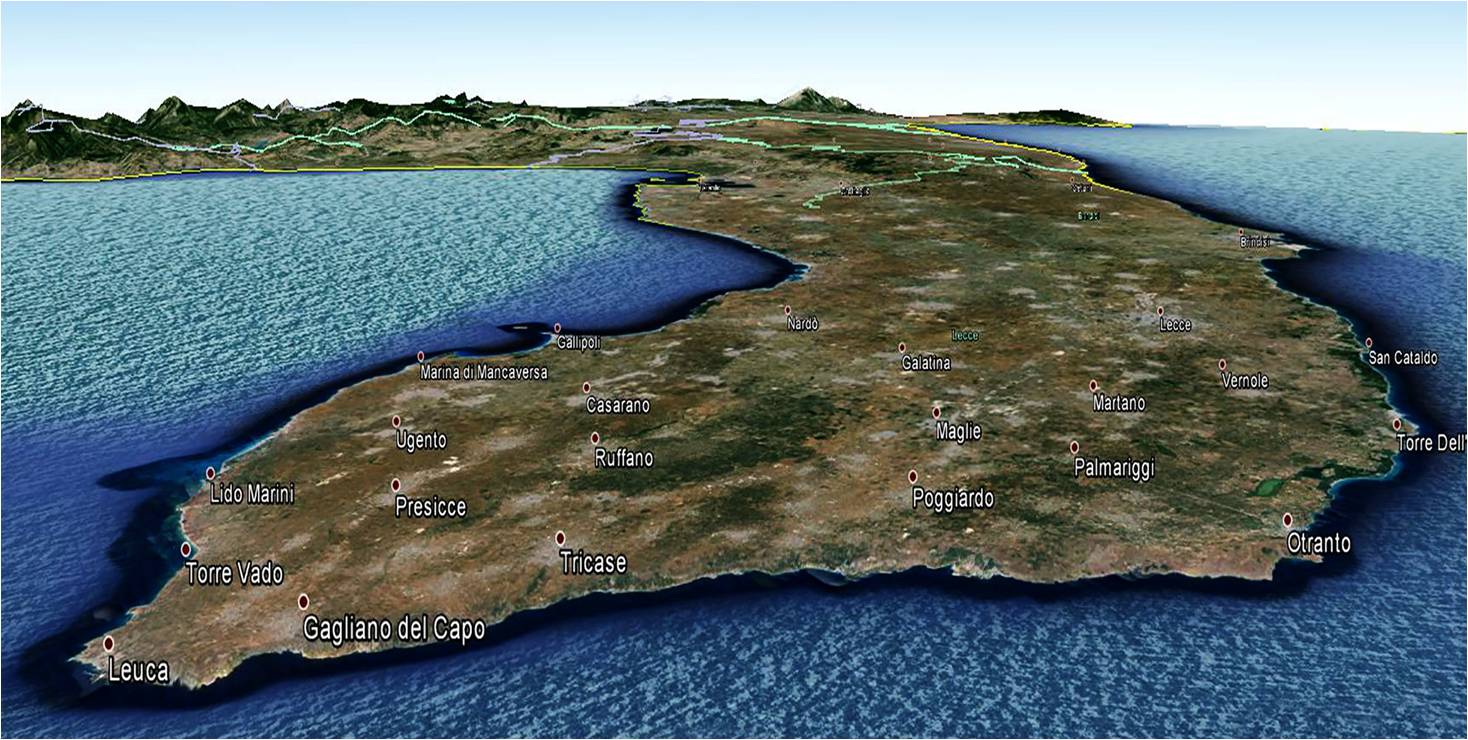
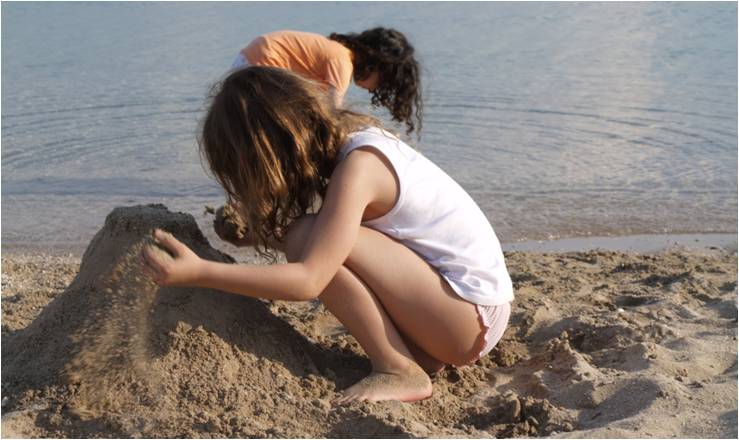
The eastern coast from Lecce to Otranto presents a varied landscape that includes woods, lagoons, beaches, rocky coastline high and low.
The peculiar features of the marshy territory preceding the reclamation are still visible.

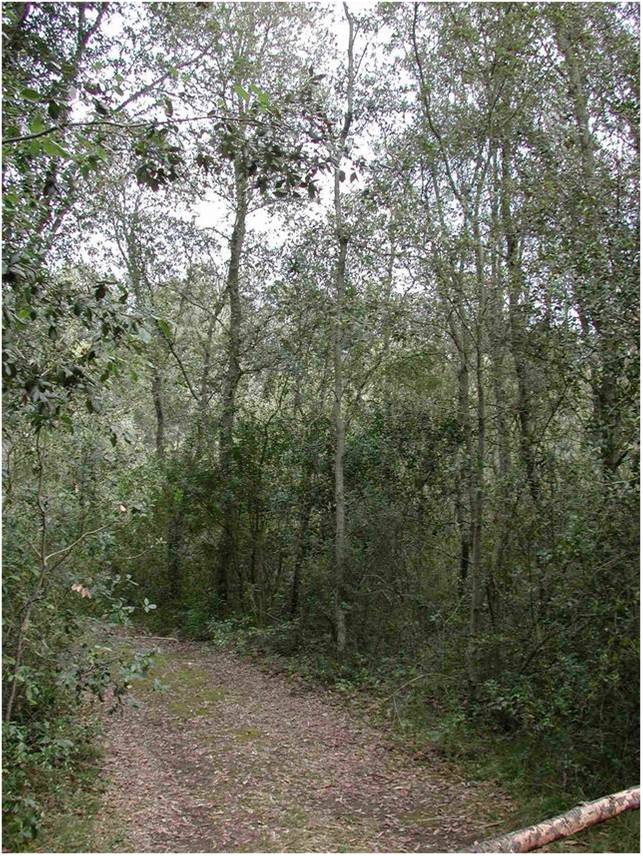 Holm Oak and pine forests
Holm Oak and pine forests
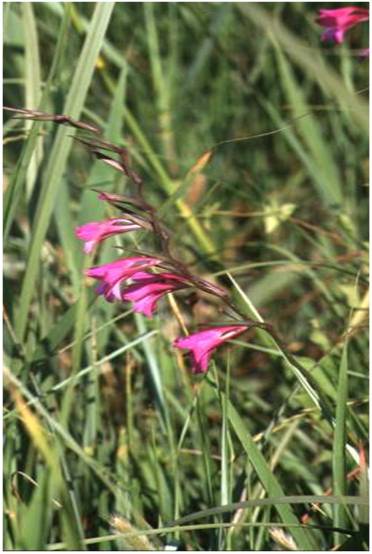 Gladiolus byzantinus
Gladiolus byzantinus
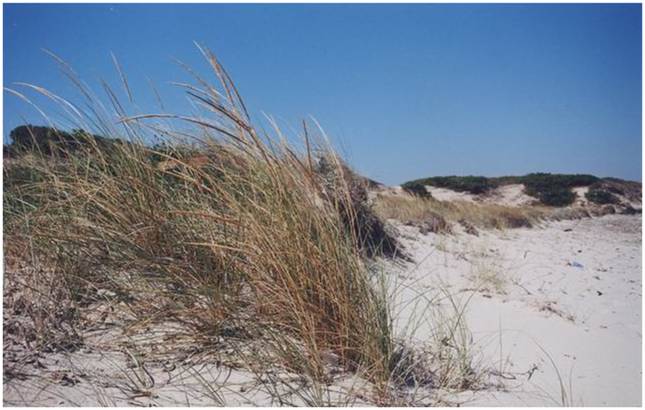
The two basins of the Alimini lakes have different origins: Karst (Fontanelle) and lagoon (Alimini Grande). Important mosaic of marsh, woodland and agrarian habitats.
The regional natural Park Costa Otranto-S.M. di Leuca and Bosco di Tricase "enjoys one of the largest densities of coastal caves in Italy (about 120); Some of these represent ideal shelters of bats, very useful mammals, which once populated our countryside and coasts at dusk, while today are increasingly threatened by different pressures that have reduced their own Populations.
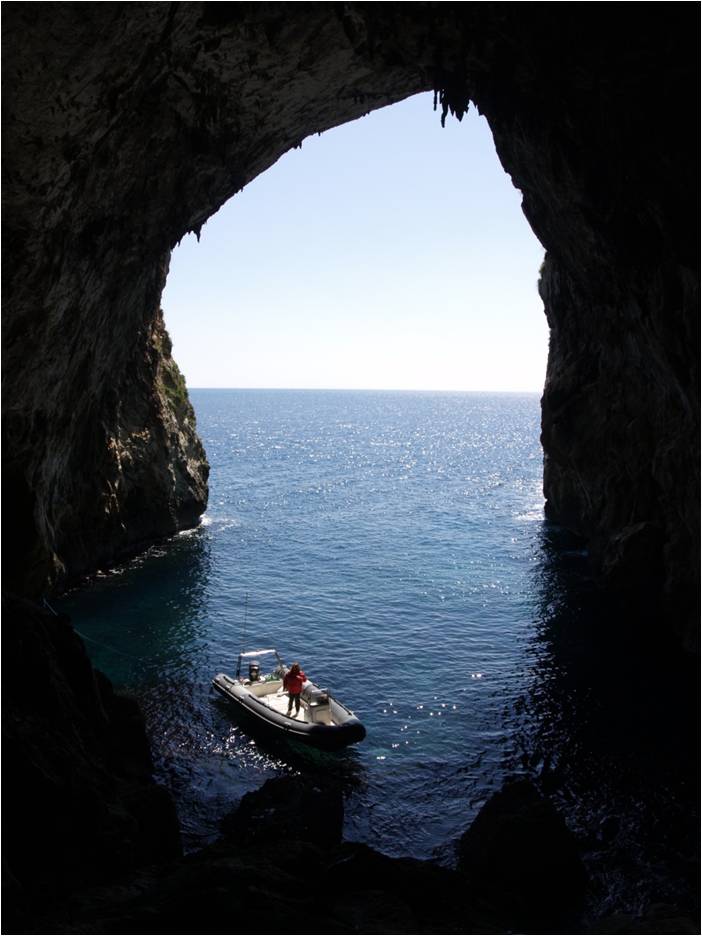
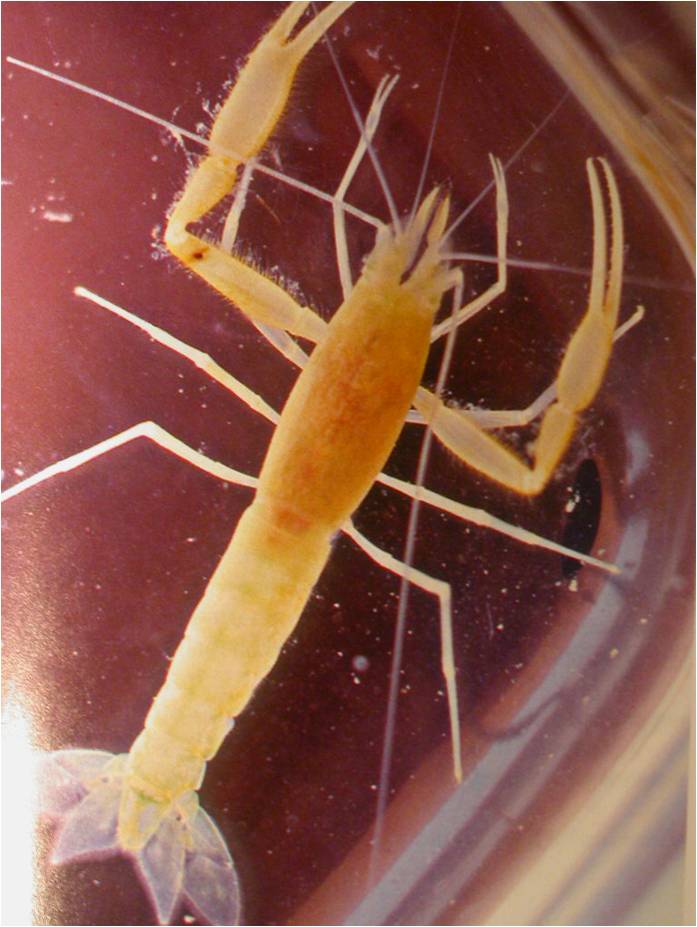
Rare cave crustaceans (spelaeomysis botazzii and Typhlocaris Salentina)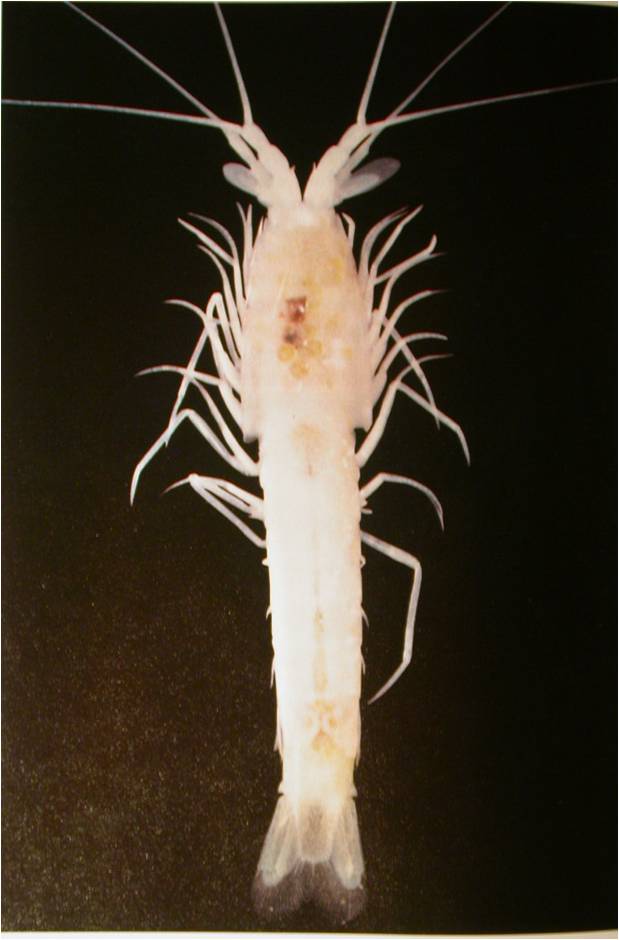
As far as flora and vegetation, the coastal area can be divided in parallel bands that present, proceeding from the coast towards the interior, different landscapes and plants.
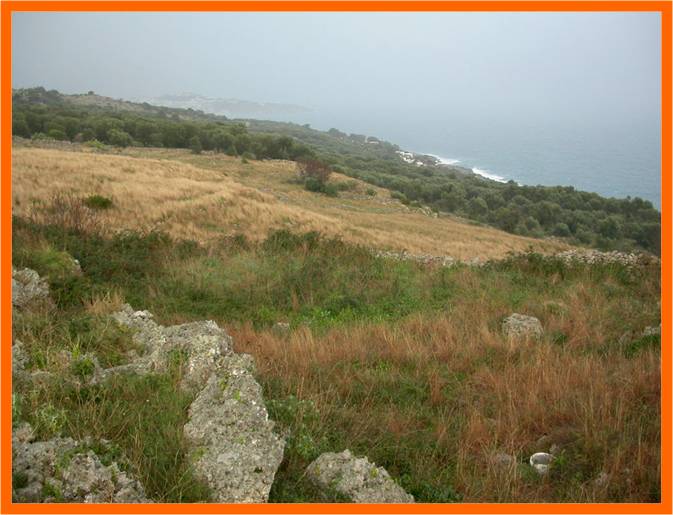
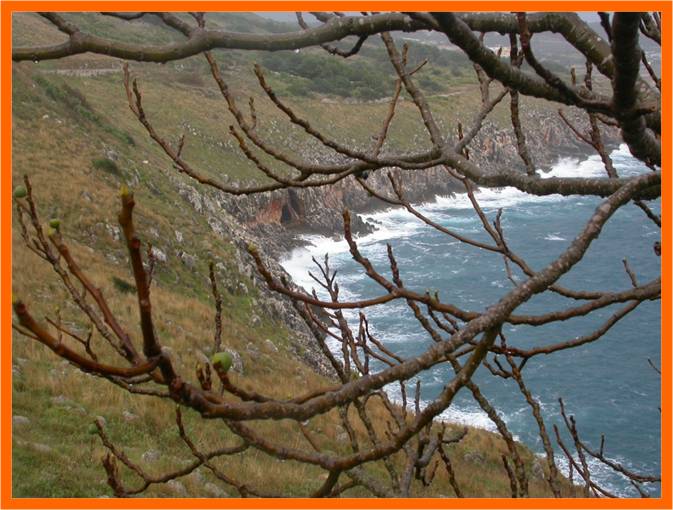
As far as flora and vegetation, the coastal area can be divided in parallel bands that present, proceeding from the coast towards the interior, different landscapes and plants.
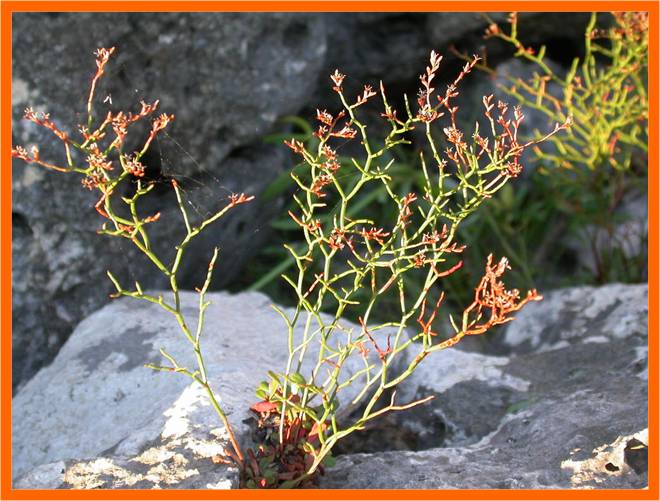 Comma Statice
Comma Statice
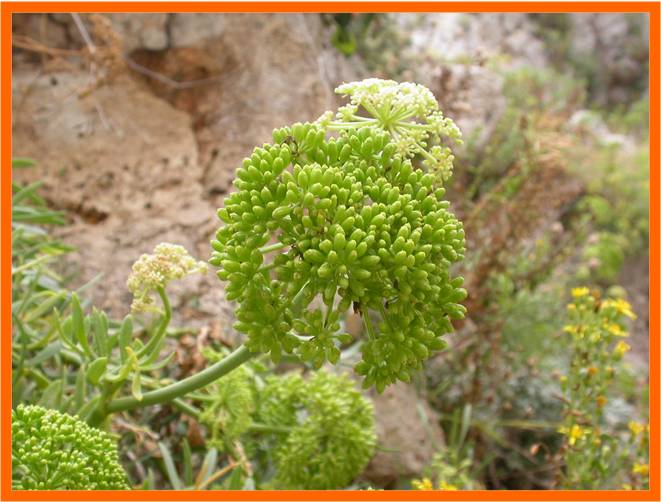 Marine Fennel
Marine Fennel
Salicornia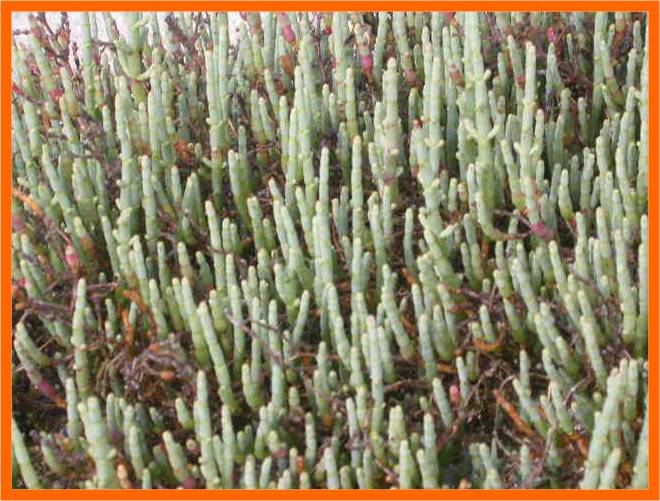
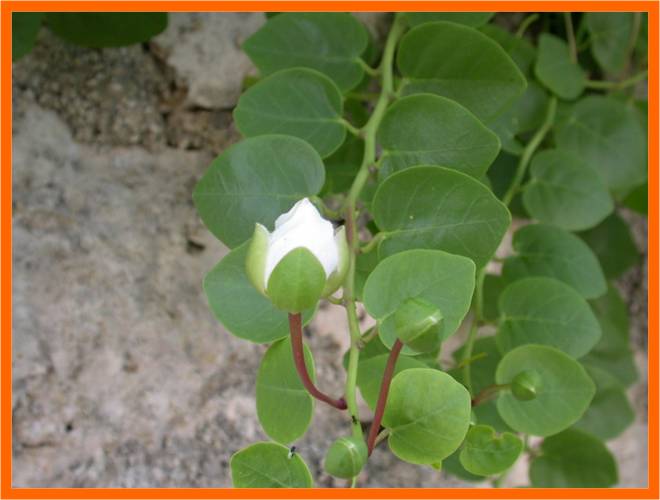 Copper Bush
Copper Bush
Vegetation of the Cliffs and Gorges
It is the vegetation that occupies the line of rocky cliffs of limestone that, in the stretch of coast between Castro and Tricase , is in a more backward position.
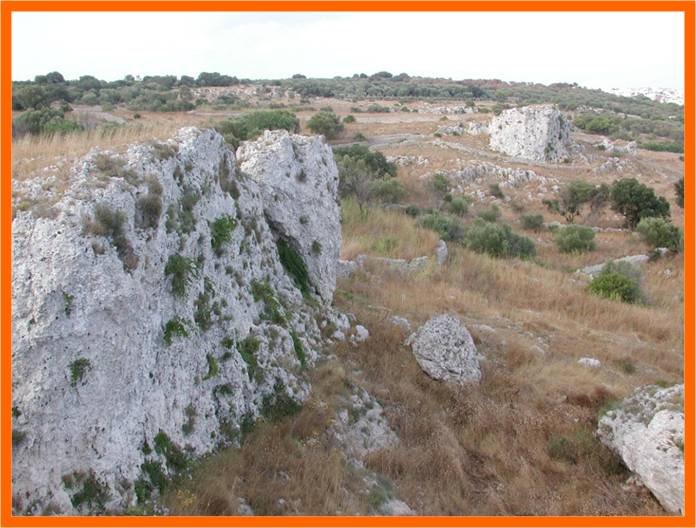
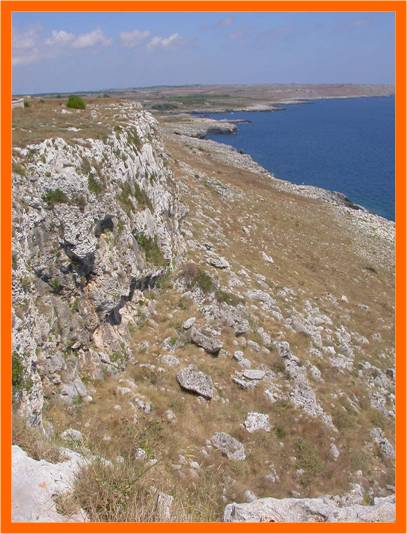
The Gorges in Leuca represent an extraordinary example of the interweaving of nature and the landscape of man.
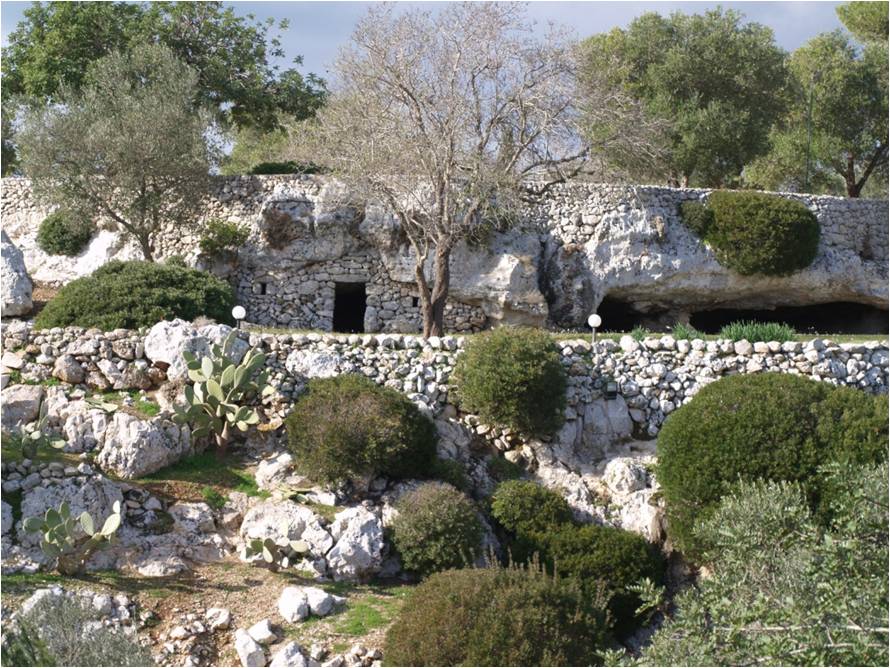
Laurel Nuclei in ravines .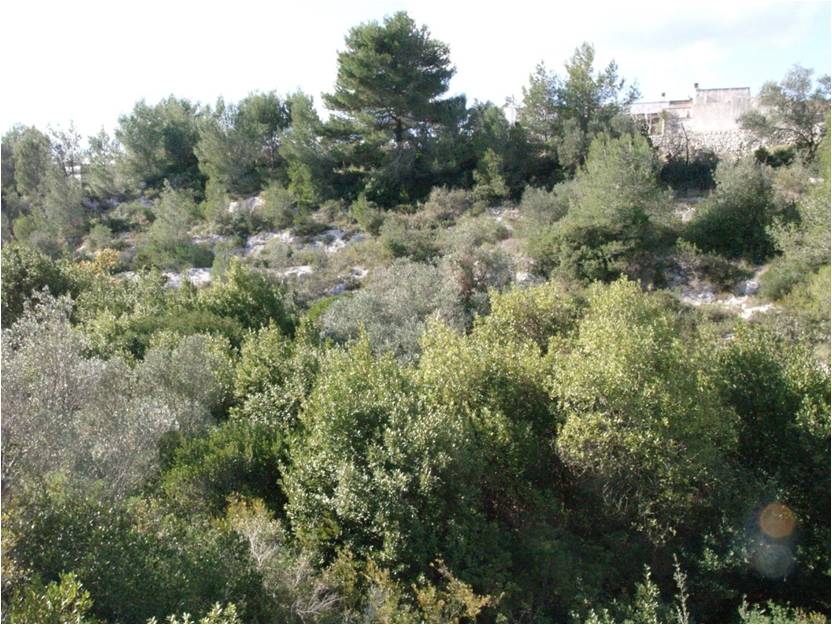
In this environment, of absolute landscape value, are also localized the plants of greatest interest, species of the red List or endemic, that is to say exclusive of this territory.
Among these, noteworthy are for example: Campanula Pugliese, Kummel of Greece, glossy scrofularia, navel of Venus Giallastrio, Alisso of Leuca.
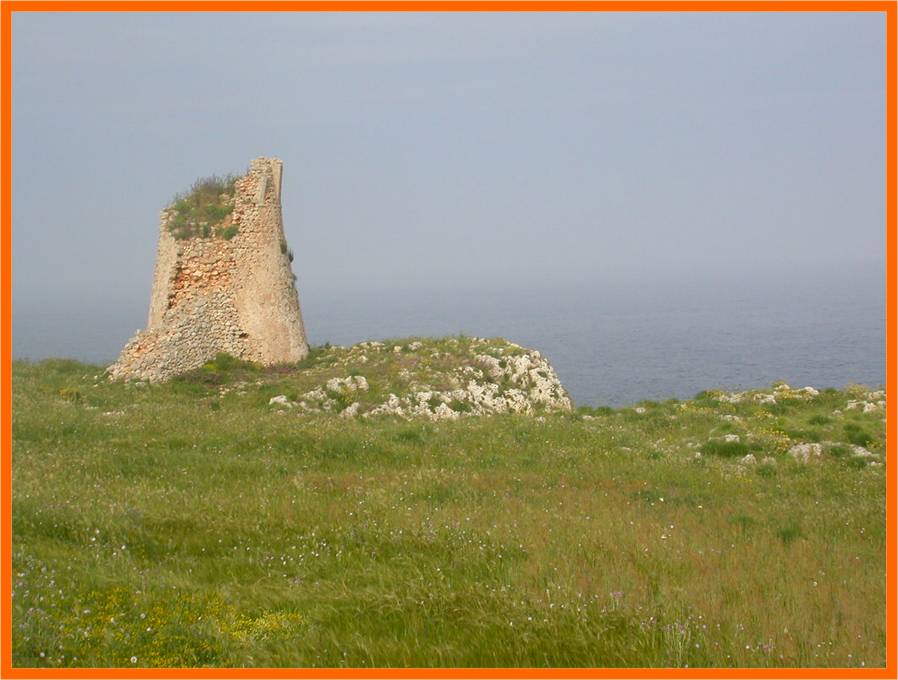
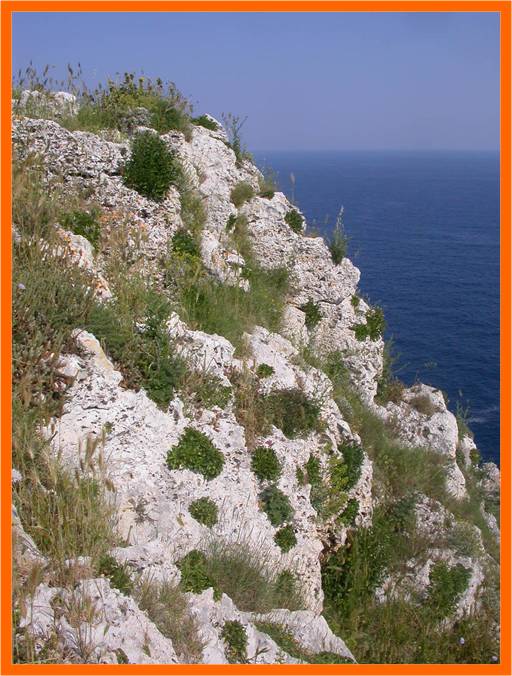
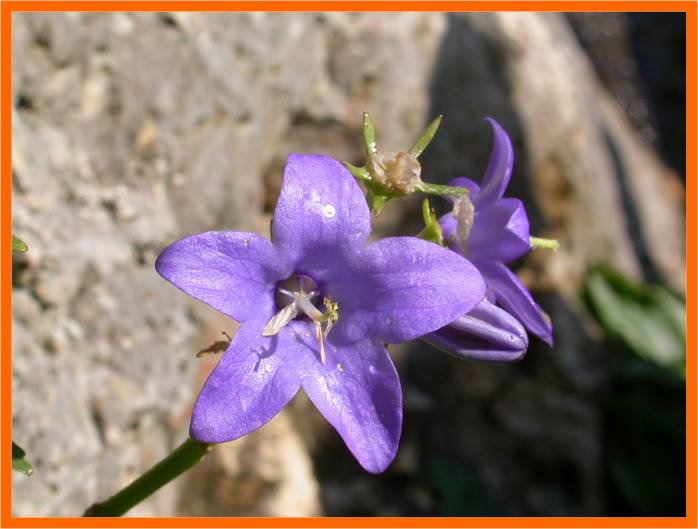
Campanula Pugliese (National Red List)
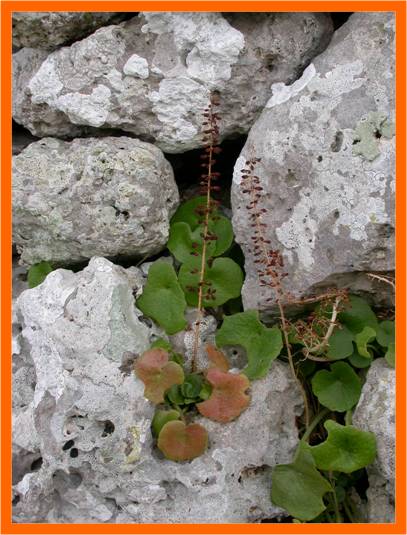 Yellowish Venus Navel (National Red List)
Yellowish Venus Navel (National Red List)
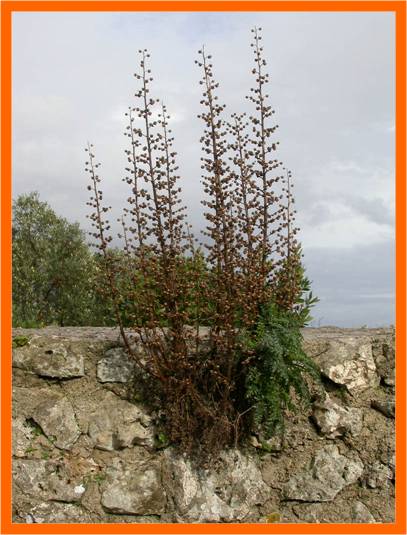 Scrofularia Lucida
Scrofularia Lucida
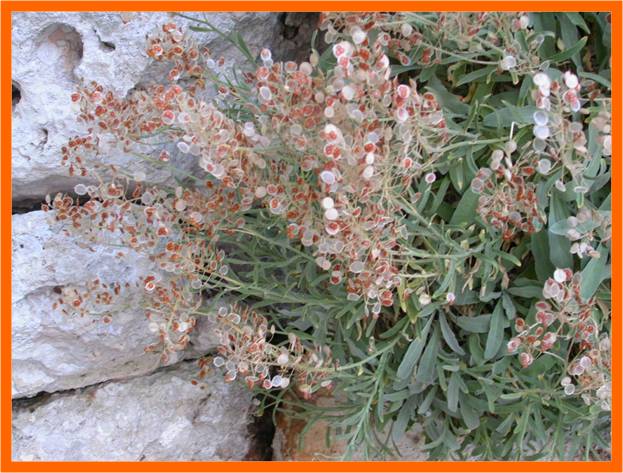 Alisso di Leuca (National Red List)
Alisso di Leuca (National Red List)
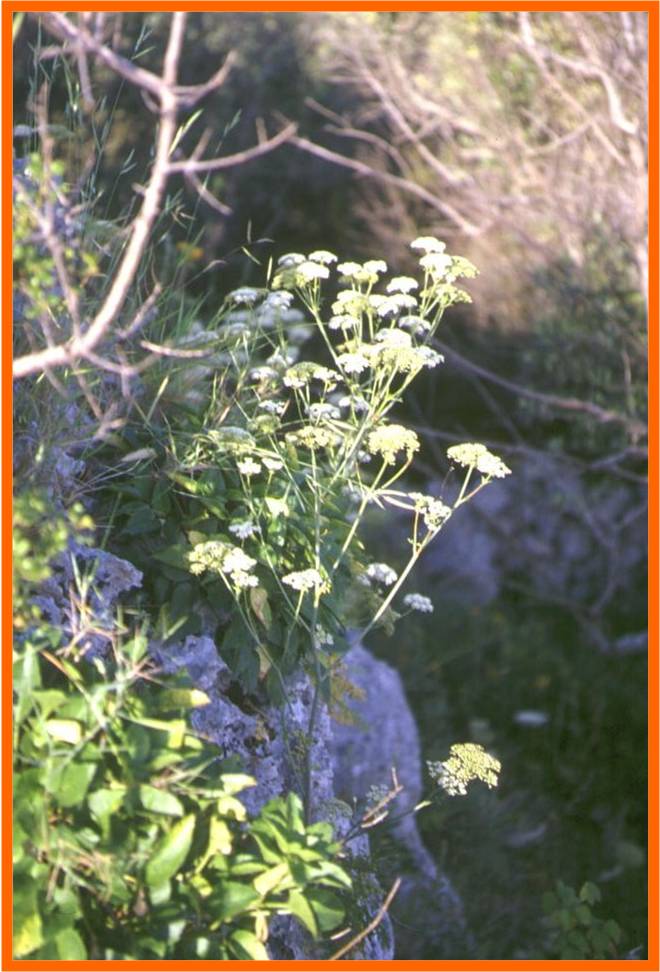
Kummel of Greece (National Red List)
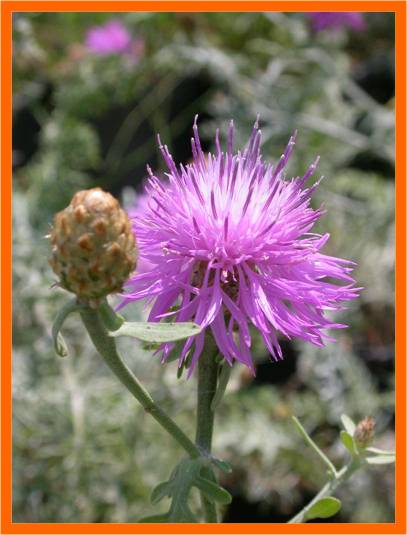 Noble Cornflower (National Red List)
Noble Cornflower (National Red List)
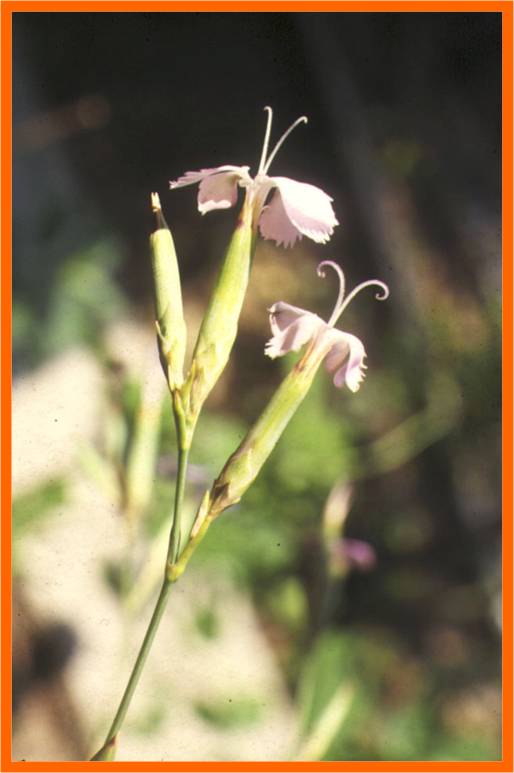 Carnation Salentino (National Red List)
Carnation Salentino (National Red List)
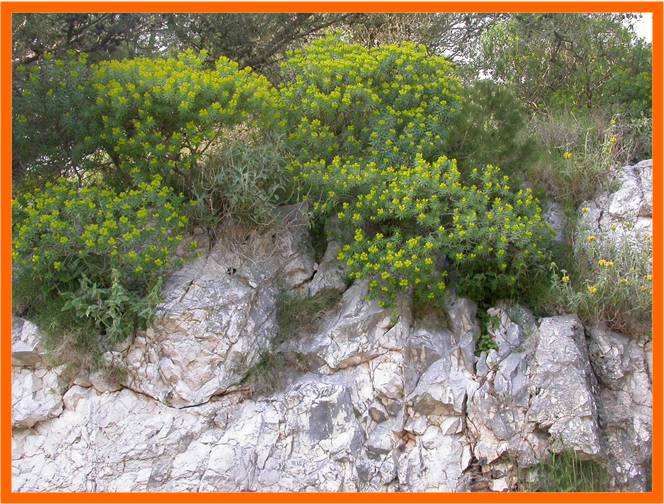
Euforbia arborea
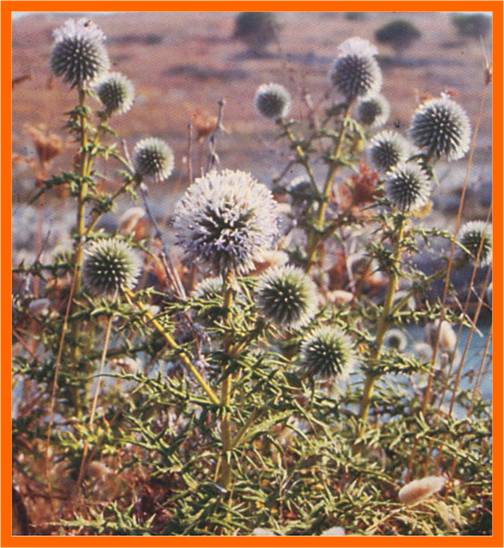 Bullet Thistle (National red list)
Bullet Thistle (National red list)
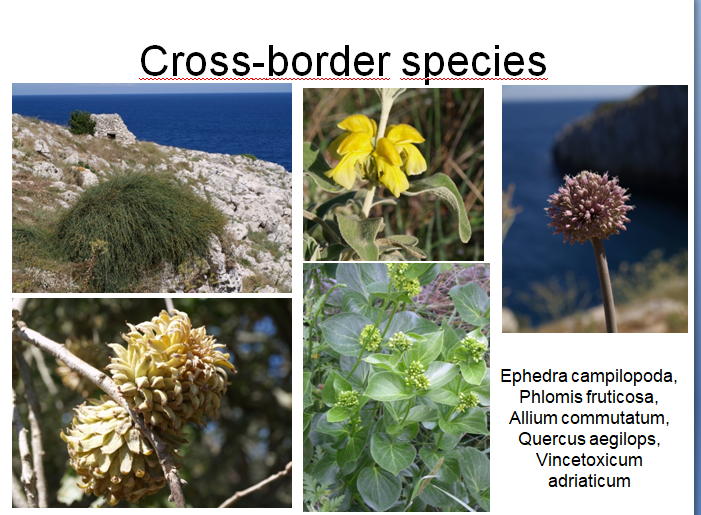
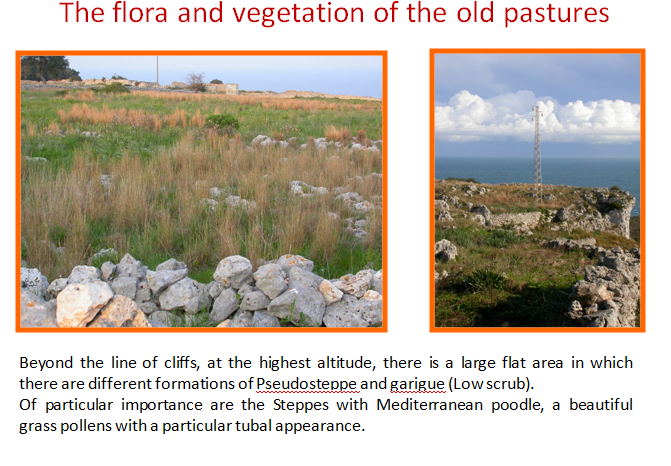
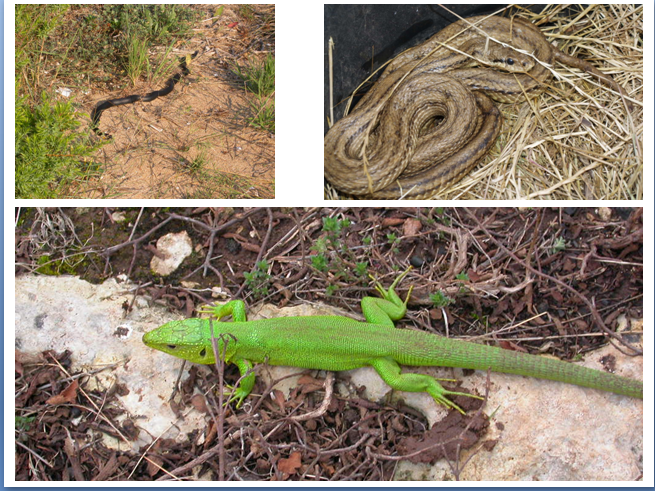
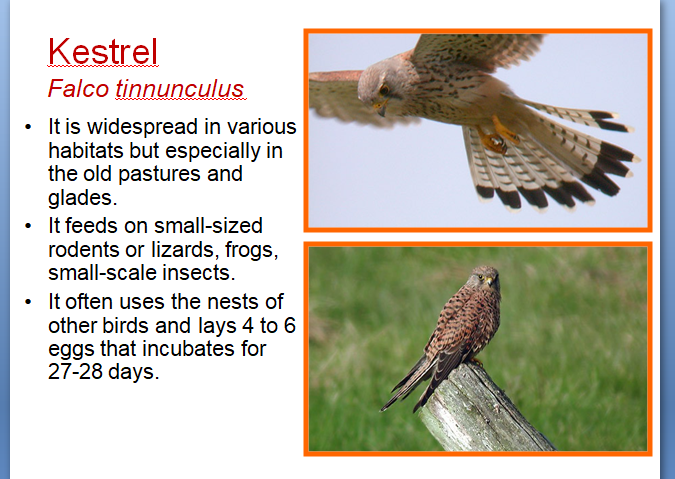
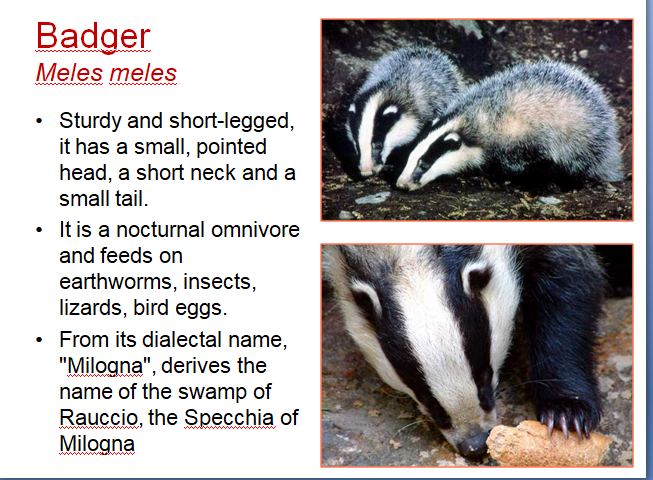
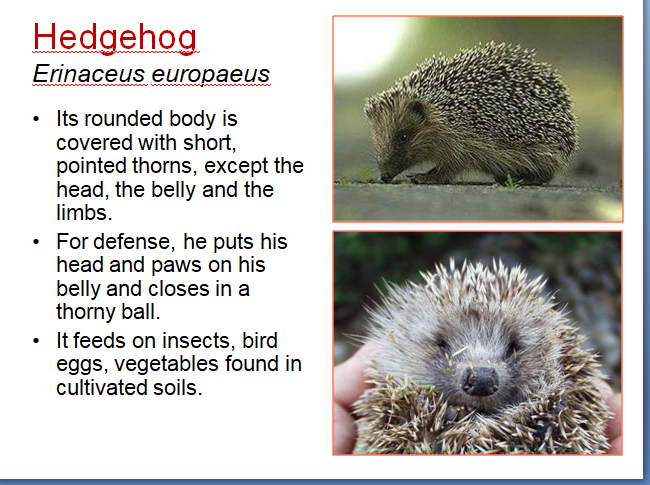
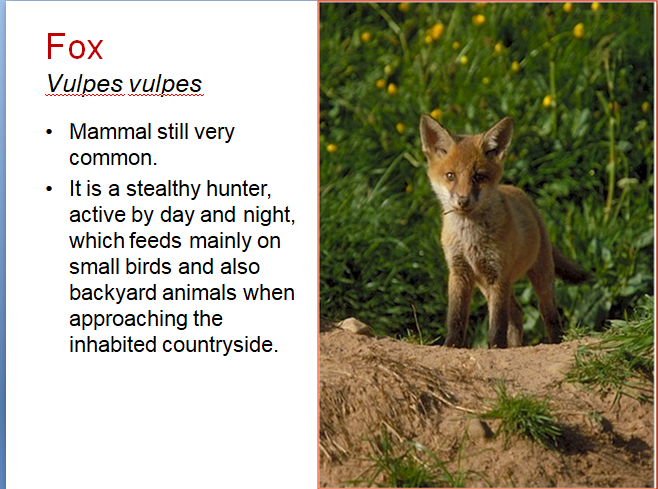
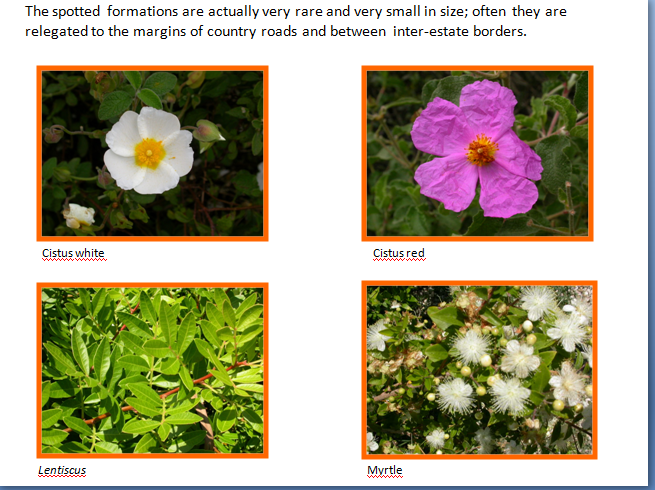
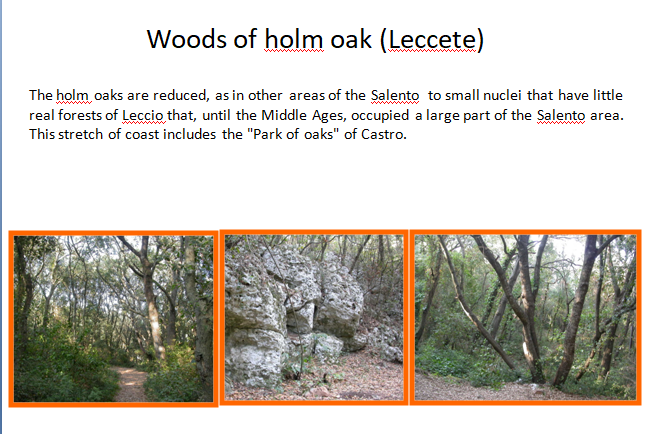
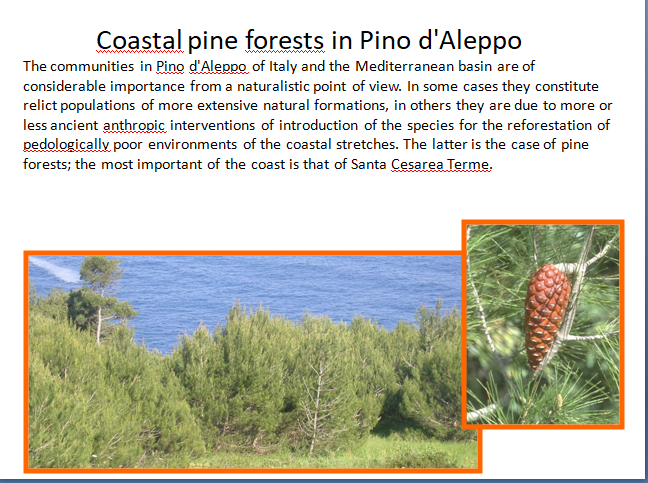
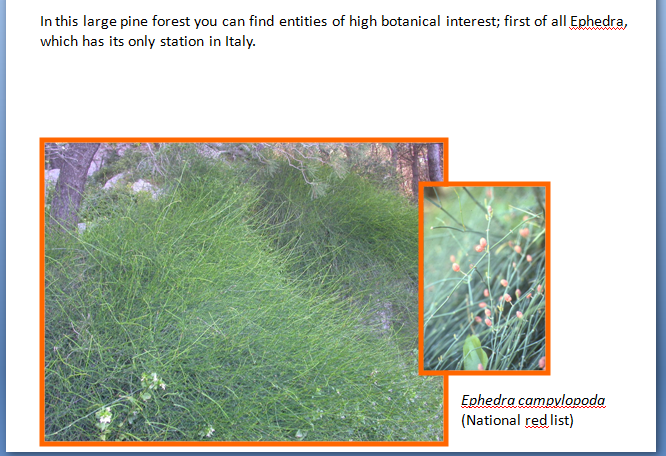
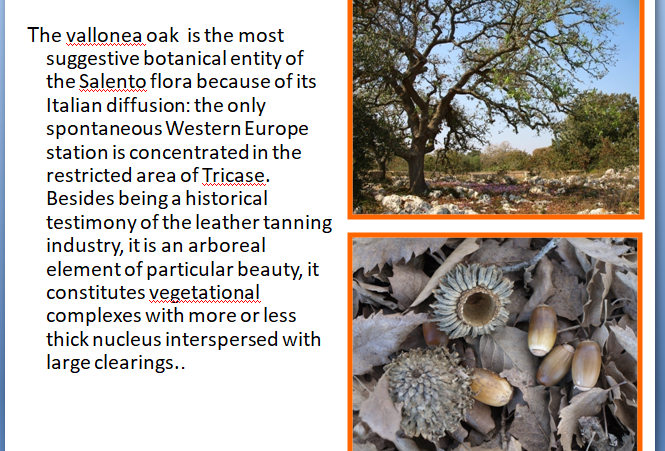
------------------------------------------------------------
PORT OF ARGOSTOLI AND KOUTAVOS LAGOON,
KEFALONIA ISLAND, GREECE
A) Abiotic parameters.
OUR AIM
Our aim was to measure the temperature, conductivity and pH of water collected from different sampling stations in the port of Argostoli, Kefalonia, as well as of tap water samples and the justification of the differences observed. The measurements were carried out by our students in 2016-17 as a part of the activities of the Erasmus+ etwinning project “Water unites us!”. The measurements continued in 2017-18 as a part of the activities of the KA219 Erasmus+ strategic partnership “Water unites us!”. The partnership was our next step after the etwinning project and will be completed in 2018-19.
MATERIALS AND METHODS
We took water samples from various stations over the Argostoli port, such as: the “Coast Guard’s” station (CG,1), the Koutavos lagoon (KL, 2) and the “Papadatos Mineral Springs” (PMS, 3) (picture 1). Tap water (TW) samples were also taken.
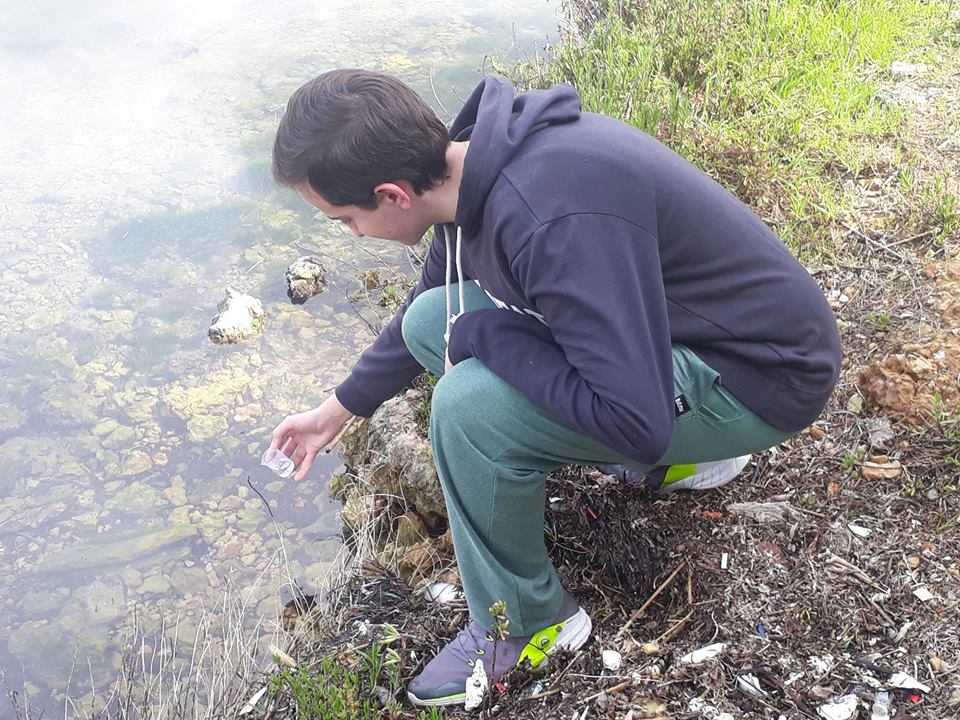
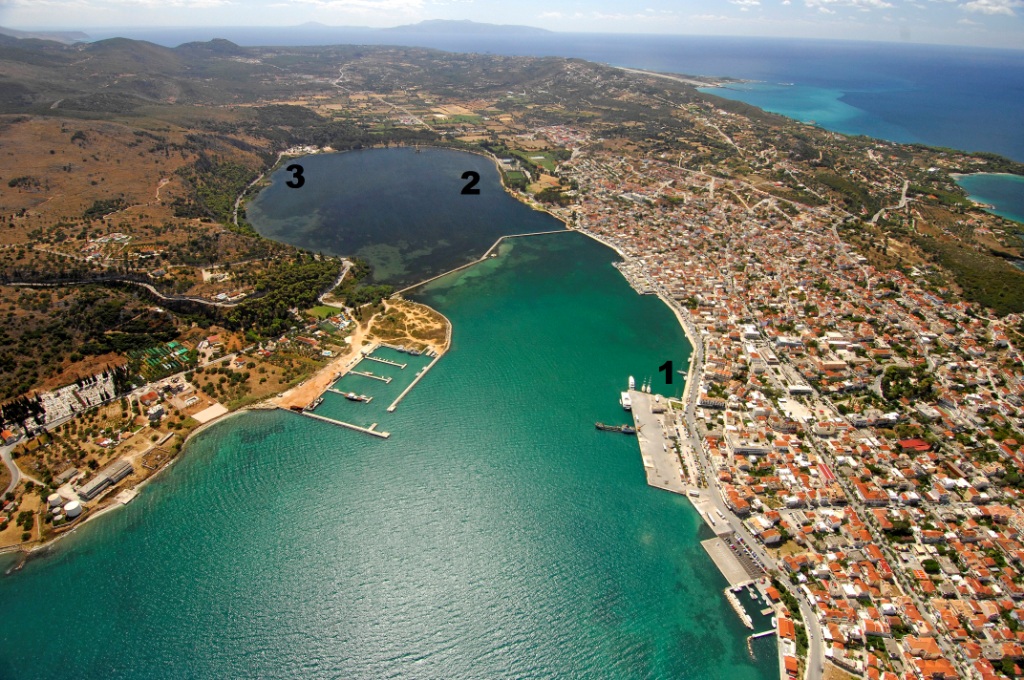
Picture 1. Water sampling stations in the port of Argostoli.
The samples were collected once a month for three months. The 1st sampling was conducted on December 11, 2016, the 2nd on January 21, 2017 and the 3rd on February 12, 2017.
Water samples were taken to the school’s laboratory in plastic vials for conductivity and pH measurements. The samples were kept in a common refrigerator (4 oC). Special sensors attached to a computer were used for pH and conductivity measurements. The measurements were conducted by our students.
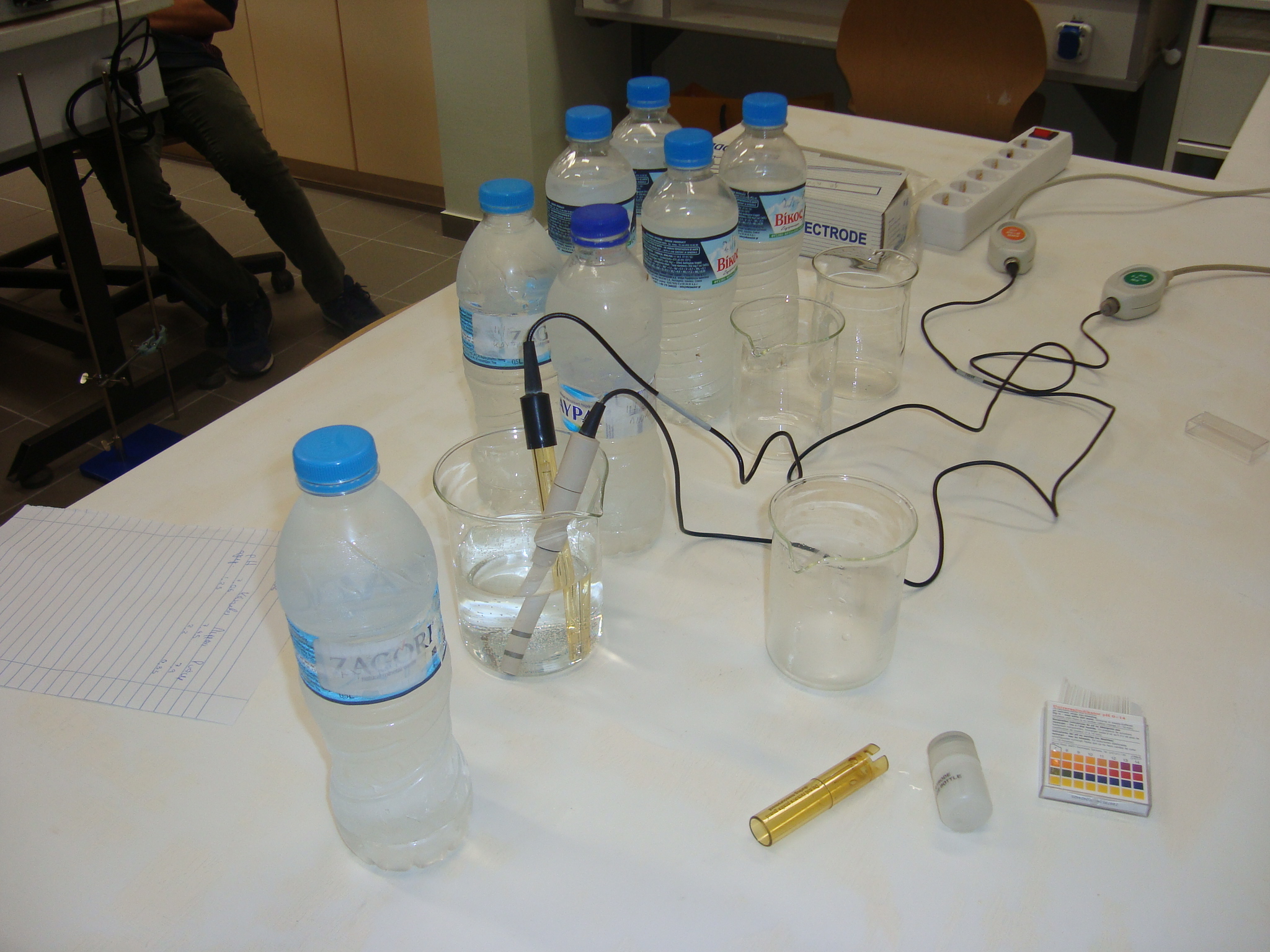
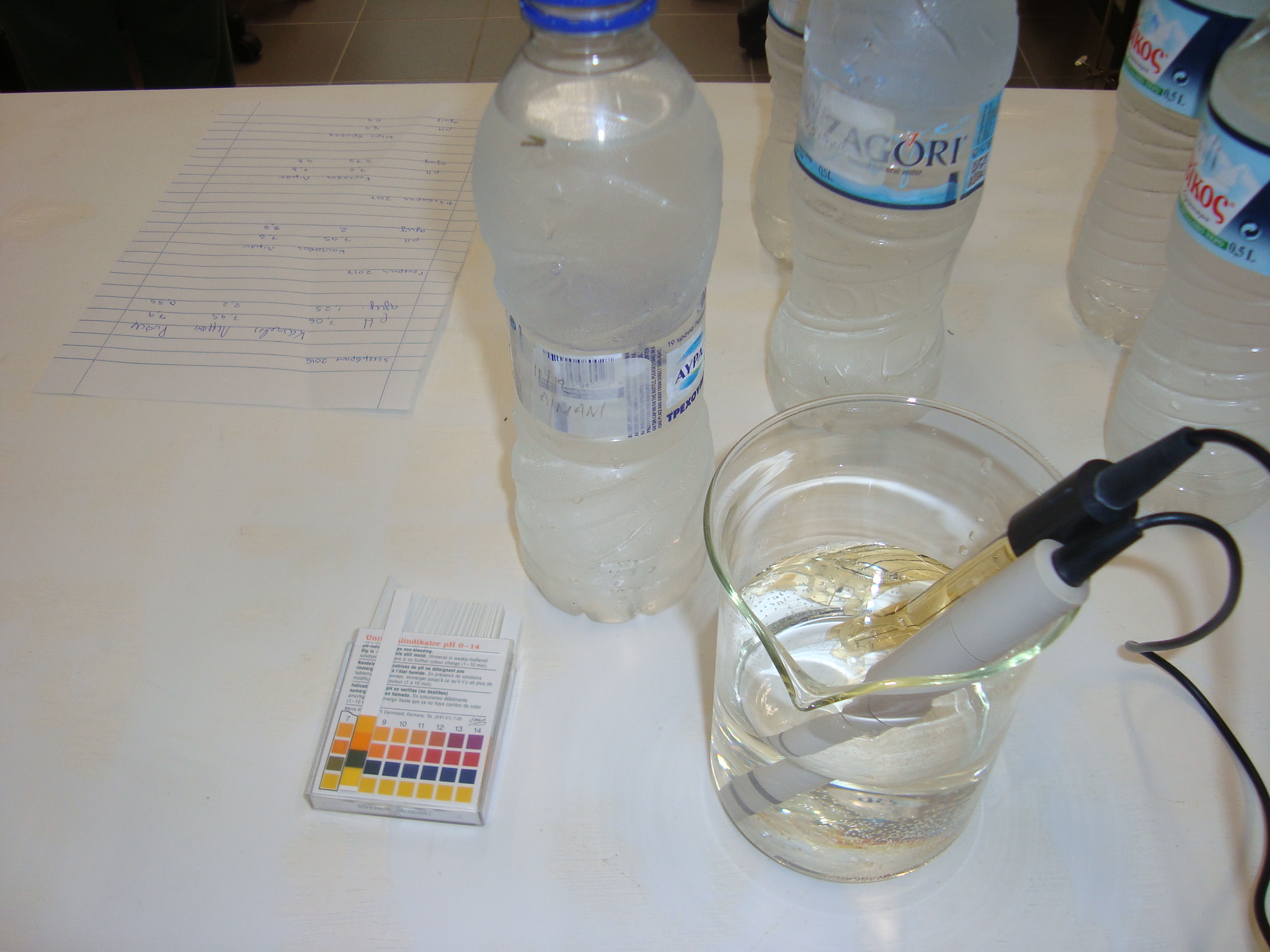
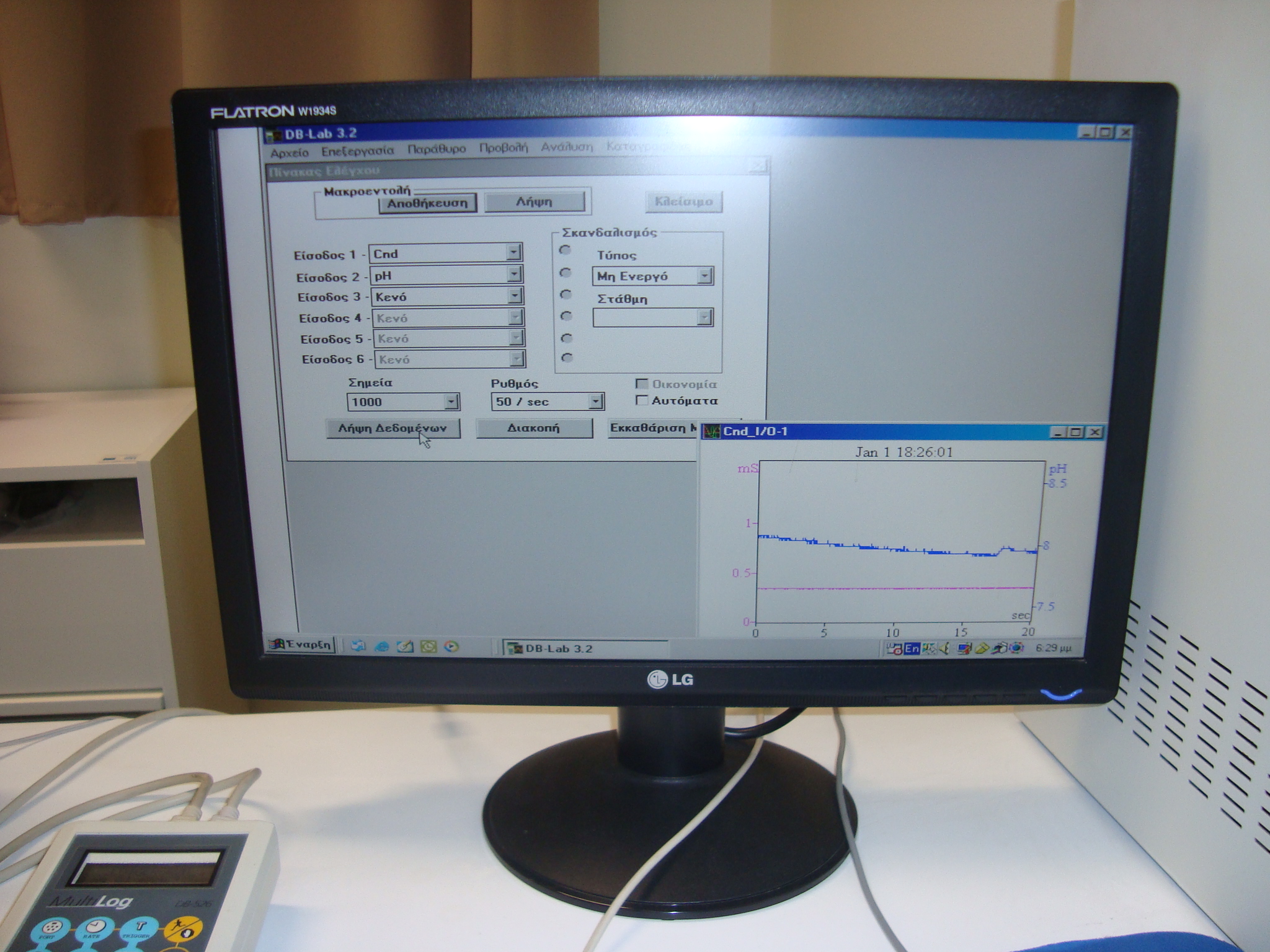
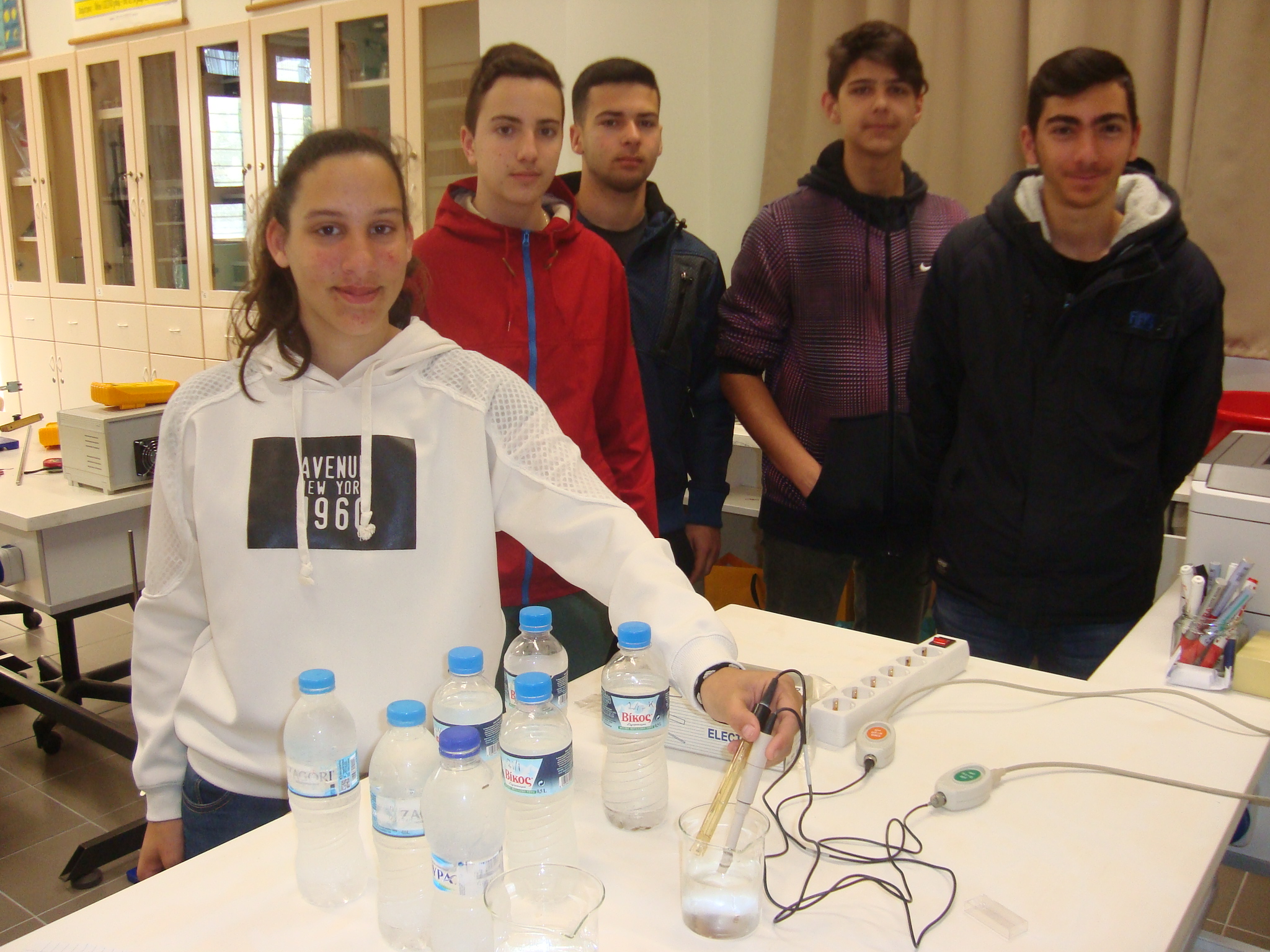
We measured the water temperature on the sampling dates at all the stations using a common mercury thermometer. The water temperature at CG and KL stations was higher in December (16 oC) and lower in January and February (13 oC). On the contrary, the water temperature at PMS station remained constant (20 oC).
We made sure that all the water samples had the same temperature at the time of pH and conductivity measurements. Therefore the samples were kept in room temperature for one day in advance before the measurements.
RESULTS
Acidity (pH) alterations of water samples from three sampling stations, as well as from tap water samples are shown in the table 1.
pH of tap and spring water seemed to be constant, in contradiction to the lagoon and the port water. The highest average pH value was found in the tap water (8.4), lower in the spring’s (7.9) and even lower in the port’s water (7.68, CG station). The lowest value was found in the water of the lagoon (7.37, KL station).
pH values of tap water are slightly higher compared to the spring water. Why is that? Water is being pumped from the spring and then carried to the aqueduct of Argostoli. Water is chlorinated with sodium hypochlorite (NaClO), before consumption. The slight pH increase in tap water, may be attributed to sodium hypochlorite, which in turn dissociates into sodium cations (Na+) and hypochrorite anions (ClO-):
NaClO → Na+ + ClO-
Hypochlorite anions react with water molecules:
ClO- + H2O D HClO + OH-
Hydroxide anions might possibly be the cause of the slight pH increase in tap water.
Conductivity alterations (mS) of water samples are shown in table 2.
Conductivity of tap and spring water seem to be constant, in contradiction to the Koutavos lagoon and the “Coast Guard’s” water. The water from the “Coast Guard’s” station showed the highest average conductivity (3.5 mS), because of its salinity (sea water). The lowest conductivity was found in the spring water (0.35 mS) and slightly higher in the tap water (0.4 mS). These low values are due to this water being fresh. Intermediary values (average 2 mS) were observed in Koutavos lagoon, since the water is brackish.
Table 1. Acidity (pH) alterations of water samples from three sampling stations, as well as from tap water samples, over three different months.
| DATE OF LAB MEASUREMENT | KL, (2) | CG, (1) | PMS, (3) | TW |
| 12/12/2016 | 7.06 | 7.45 | 7.9 | 8.4 |
| 22/1/2017 | 7.45 | 7.8 | 7.9 | 8.4 |
| 13/2/2017 | 7.6 | 7.8 | 7.9 | 8.4 |
| AVERAGE | 7.37 | 7.68 | 7.9 | 8.4 |
Table 2. Conductivity alterations (mS) of water samples from three different sampling stations, as well as from tap water samples during three different months.
| DATE OF LAB MEASUREMENT | KL, (2) | CG, (1) | PMS, (3) | TW |
| 12/12/2016 | 1.25 | 2.2 | 0.35 | 0.4 |
| 22/1/2017 | 2 | 3.6 | 0.35 | 0.4 |
| 13/2/2017 | 1.75 | 4.8 | 0.35 | 0.4 |
| AVERAGE | 2 | 3.5 | 0.35 | 0.4 |
CONCLUSIONS
In conclusion, pH and conductivity of the water from different sampling stations in the port of Argostoli as well as from tap water showed various fluctuations. pH values remained constant throughout the samplings only in Papadatos mineral springs as well as in tap water. The average pH value was highest in tap water possibly because of the sodium hypochlorite (NaClO).
Conductivity is determined by the salinity of the water. It was highest in seawater and lowest in fresh water.
Finally, measurements of water abiotic parameters (temperature, pH, conductivity) are very interesting and will be definitely continued by the environmental groups of our school in the future!
OUR TEAM
The project was conducted by the following students: Nikolas Dimatos, Marilena Kalafati, Gerasimos Mountakis, Gerasimos Mpouras, Chris Parameras and Iasonas Savvaoglou.
Mrs Efpraksia Grigoropoulou (Chemist) and Mr Spyridon Kavvadias (Dr Biologist), teachers of our school, were supervising the project.
We are thankful to Mr Dionysios Patrikios, teacher of Physics of our school, for the laboratory support as well as to Ms Georgia Theodoropoulou, teacher of English literature of our school, for the linguistic support.
B) Flora and fauna of Koutavos lagoon.
Koutavos lagoon is located at the south – south east in the Argostoli bay (https://www.youtube.com/watch?v=QTtjP2YkeXQ). It is approximately 200 acres in area. The average depth is 0.80 m (0.3 – 3 m) and the total coastline length is 4 km. To the south there is a small island, connected to the land, called “Pontikonisi”. The lagoon communicates to the north -northwest with the sea through the arches of De Bosset bridge. To the south – southeast spring water gushes and drainage ditches from Krania valley flow. Many species of flora and fauna are met in the ecosystem of the lagoon.
B1) Representative species of flora.
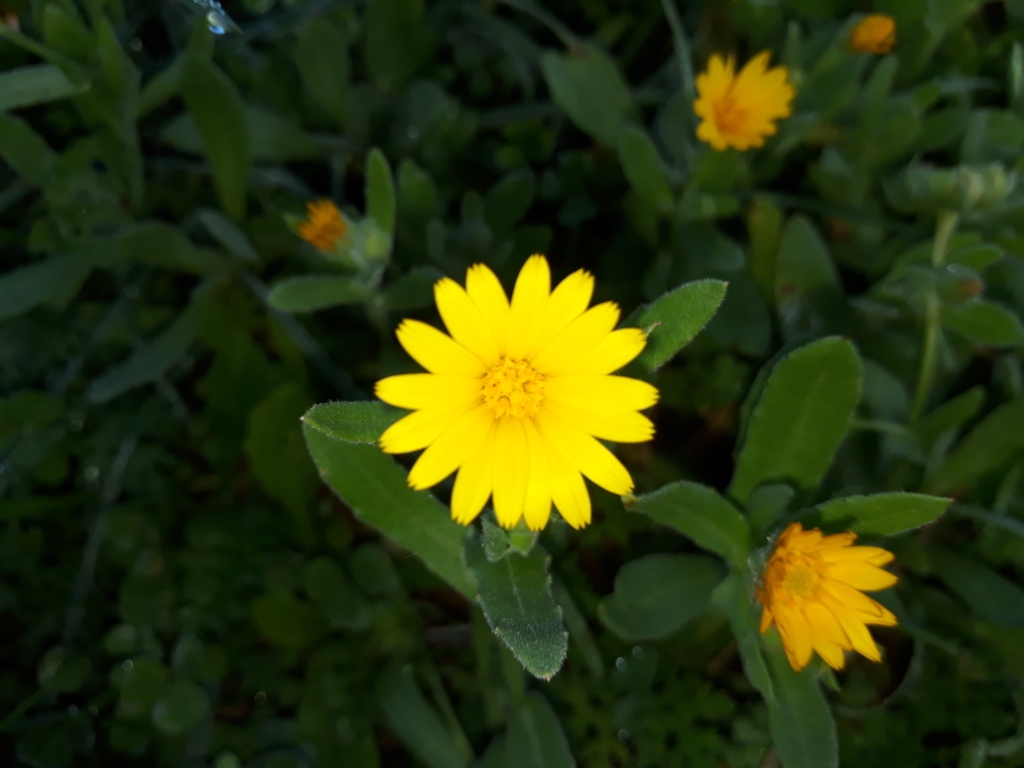
Calendula arvensis is a species of flowering plant in the daisy family known by the common name field marigold. It is native to central and southern Europe, and it is known across the globe as an introduced species. Calendula arvensis is an annual or biennial herb 10 – 50 cm tall. The leaves are lance-shaped and borne on petioles from the slender, hairy stem. The inflorescence is a single flower head up to four centimeters wide with bright yellow to yellow-orange ray florets around a center of yellow disc florets. The fruit is an achene which can take any of three shapes, including ring-shaped, that facilitate different methods of dispersal ( https://en.wikipedia.org/wiki/Calendula_arvensis ).
-------------------------------------------------------------------------
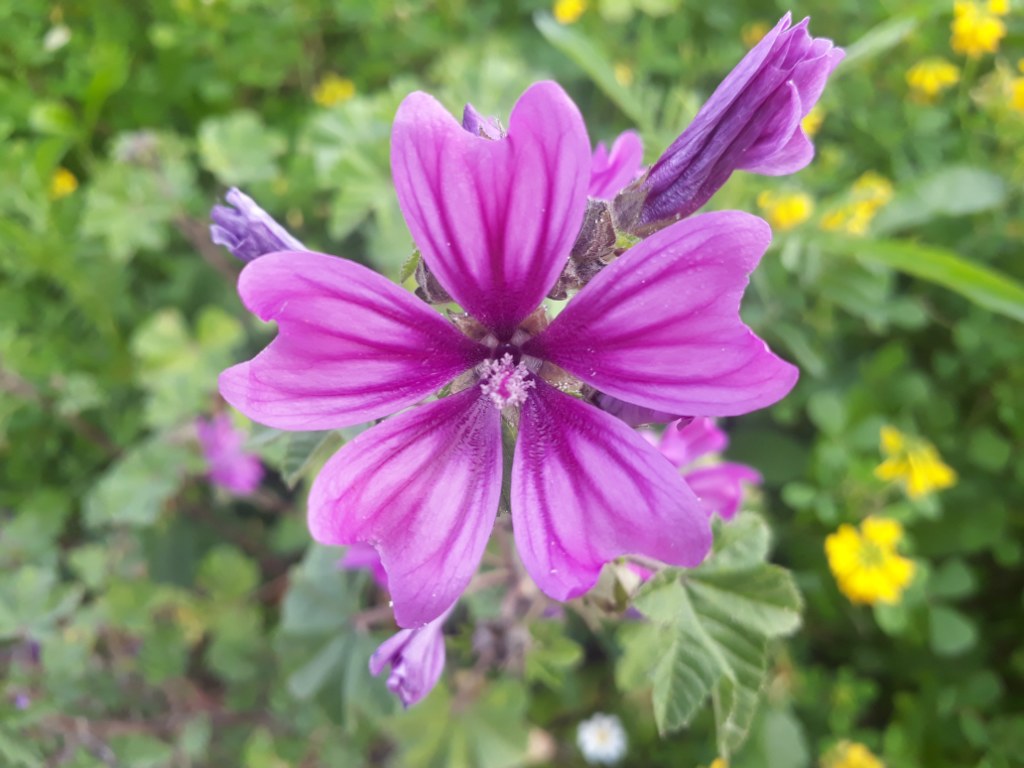
Malva sylvestris is a species of the mallow genus Malva in the family of Malvaceae and is considered to be the type species for the genus. Known as common mallow to English-speaking Europeans, it acquired the common names of cheeses, high mallow and tall mallow (mauve des bois by the French) as it migrated from its native home in Western Europe, North Africa and Asia through the English-speaking world ( https://en.wikipedia.org/wiki/Malva_sylvestris ).
----------------------------------------------------------------------
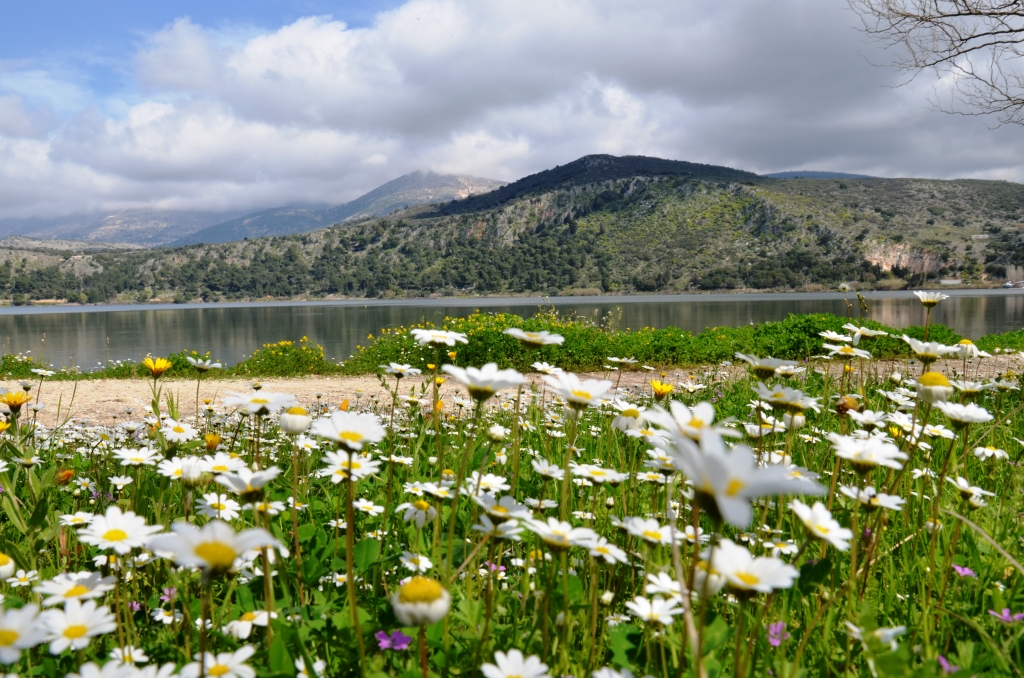
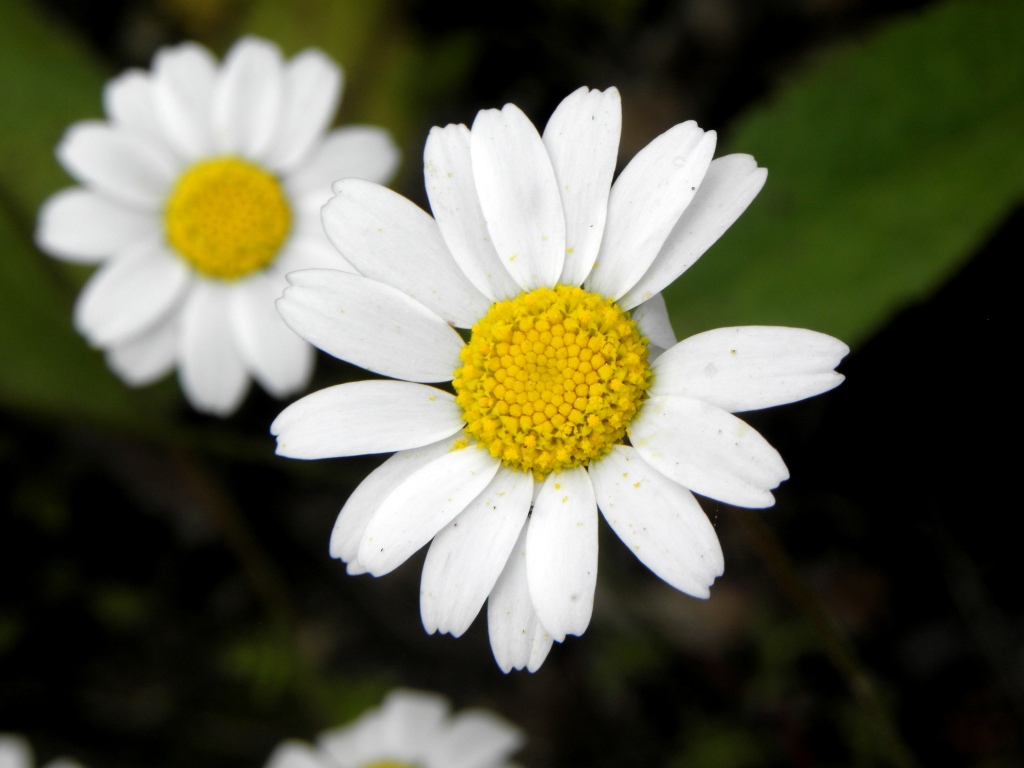
Many related plants also share the name "daisy", so to distinguish this species from other daisies it is sometimes qualified as common daisy, lawn daisy or English daisy. Historically, it has also been commonly known as bruisewort and occasionally woundwort (although the common name woundwort is now more closely associated with Stachys). Bellis perennis is native to western, central and northern Europe, but widely naturalised in most temperate regions including the Americas and Australasia ( https://en.wikipedia.org/wiki/Bellis_perennis ).
-------------------------------------------
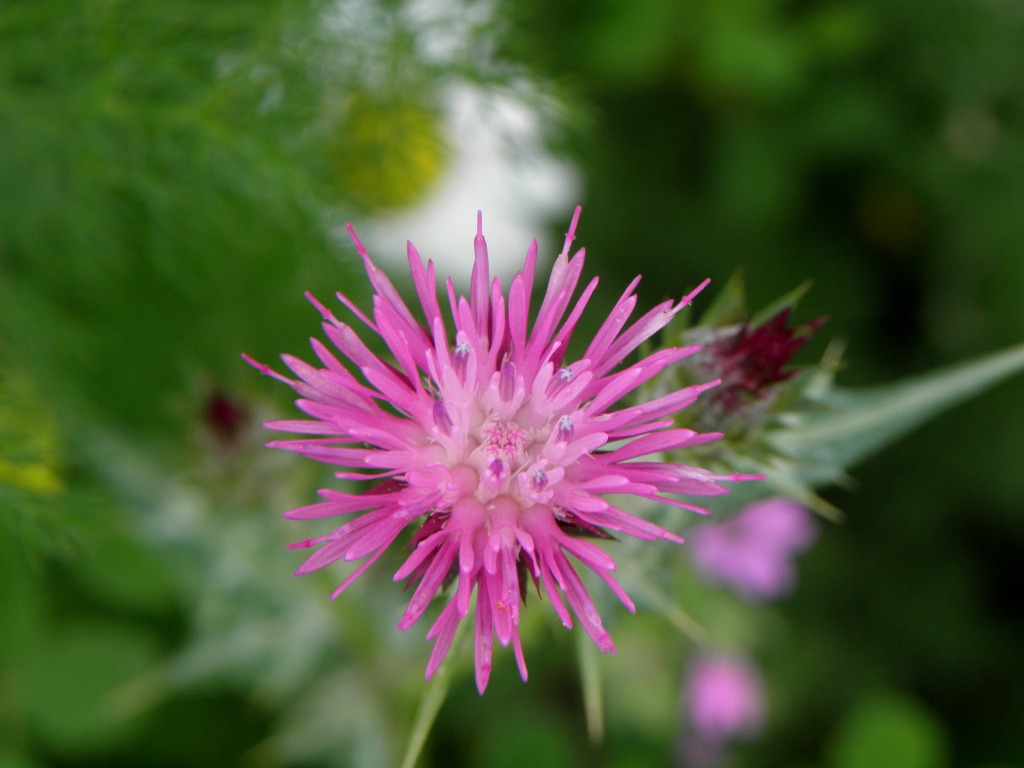
Carduus pycnocephalus, with common names including Italian thistle, Italian plumeless thistle, and Plymouth thistle, is a species of thistle. It is native to the Mediterranean region in southern Europe, North Africa, and Western Asia; East Europe and the Caucasus; and the Indian Subcontinent. The plant has become an introduced species in other regions, and on other continents, often becoming a noxious weed or invasive species ( https://en.wikipedia.org/wiki/Carduus_pycnocephalus ).
----------------------------------------------------------------
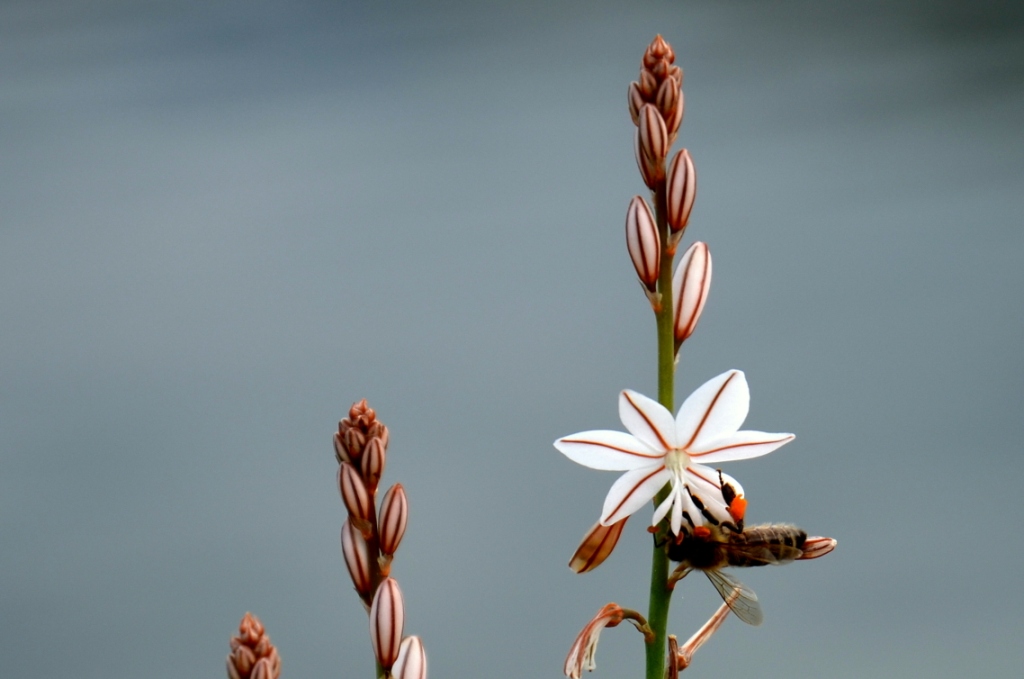
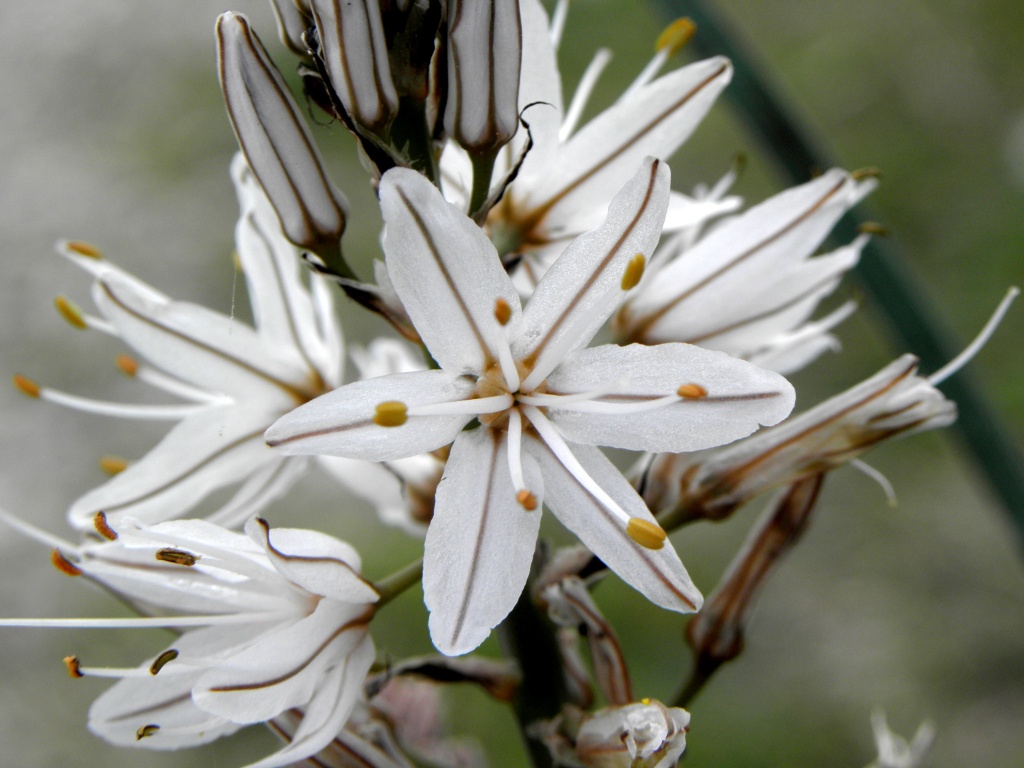
Asphodelus ramosus, also known as branched asphodel, is a perennial herb in the Asparagales order. Asphodelus ramosus is native to the Mediterranean region of southern Europe, northern Africa, and the Middle East. It can also be found in the Canary Islands. Its very numerous flowers are white with six tepals bearing a central brown streak. The fruits are small round capsules. It has been thought to be Homer's asphodel of the underworld ( https://en.wikipedia.org/wiki/Asphodelus_ramosus ).
------------------------------------------------------------
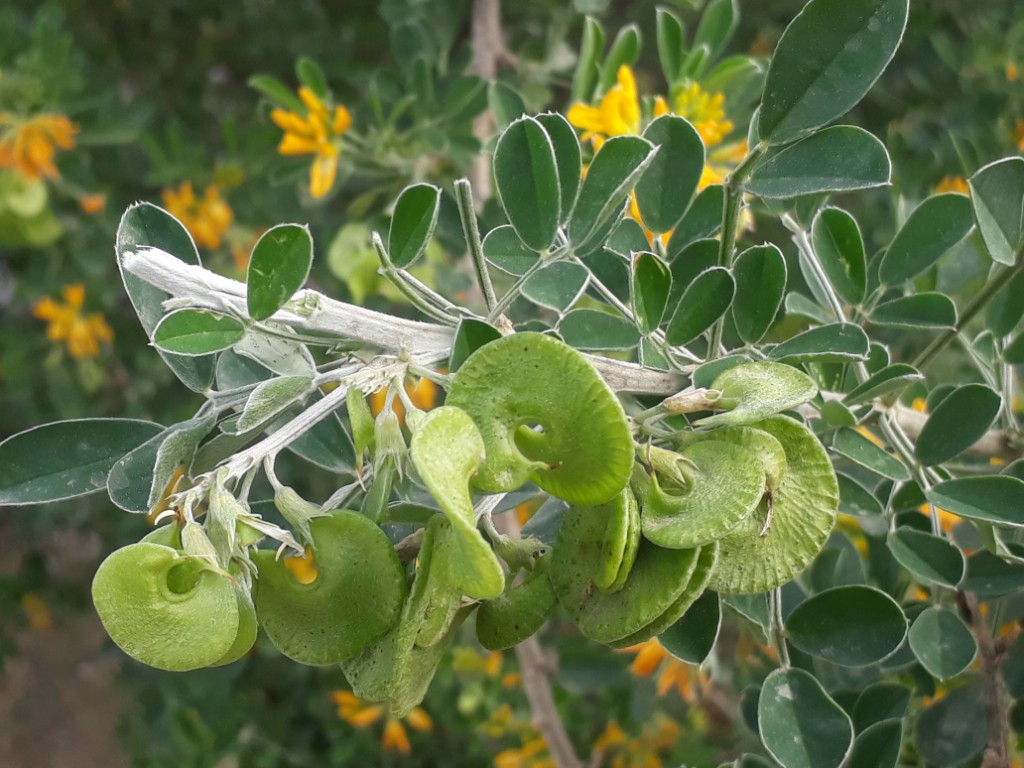
Medicago arborea is a flowering plant species in the pea and bean family Fabaceae. It is found throughout Europe and especially in the Mediterranean basin, primarily on rocky shores among shrubby vegetation. It forms a symbiotic relationship with the bacterium Sinorhizobium meliloti, which is capable of nitrogen fixation. It is the only member of the genus Medicago which is used as an ornamental ( https://en.wikipedia.org/wiki/Medicago_arborea ).
-------------------------------------------------------------
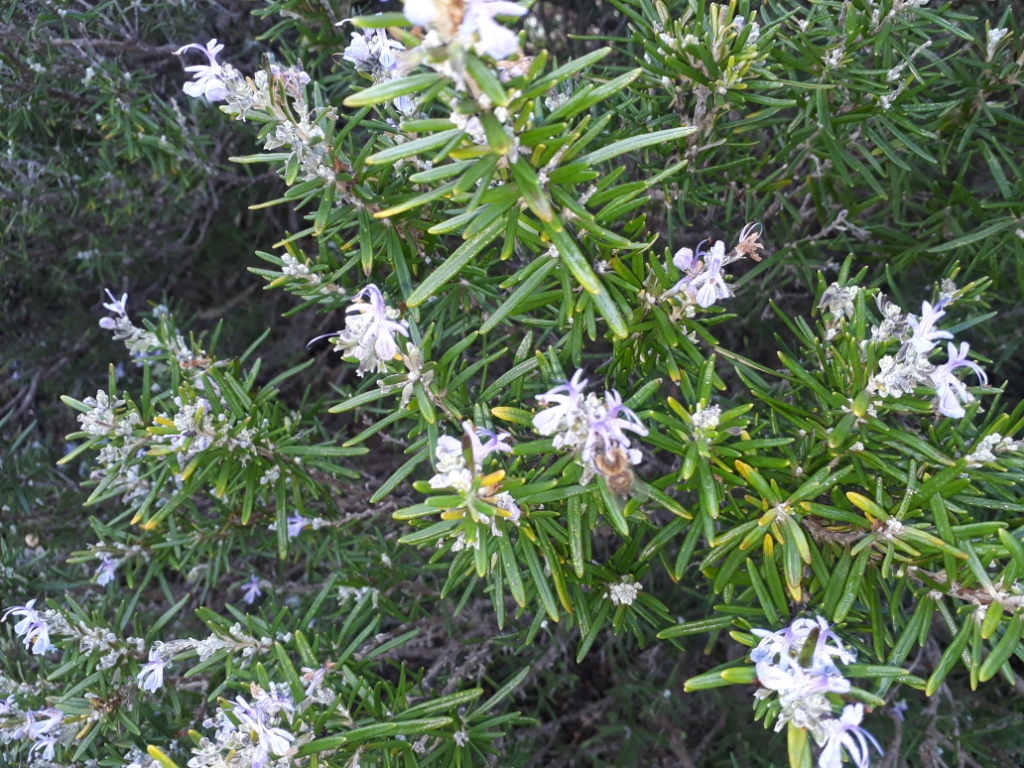
Rosmarinus officinalis, commonly known as rosemary, is a woody, perennial herb with fragrant, evergreen, needle-like leaves and white, pink, purple, or blue flowers, native to the Mditerranean region. It is a member of the mint family Lamiaceae, which includes many other herbs. The name "rosemary" derives from the Latin for "dew" (ros) and "sea" (marinus), or "dew of the sea". The plant is also sometimes called anthos, from the ancient Greek word ἄνθος, meaning "flower" ( https://en.wikipedia.org/wiki/Rosemary ).
-------------------------------------------------------
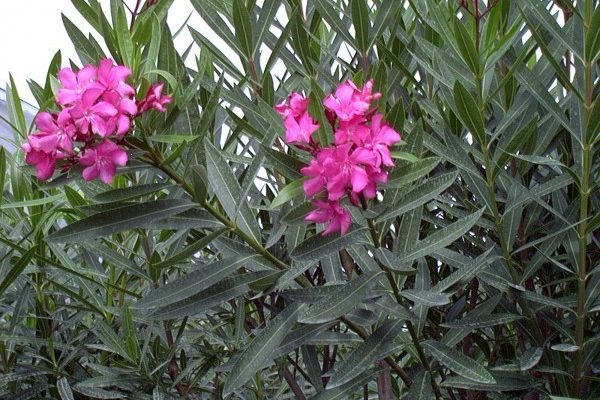
Nerium oleander is a shrub or small tree in the dogbane family Apocynaceae, toxic in all its parts. It is the only species currently classified in the genus Nerium. It is most commonly known as nerium or oleander, from its superficial resemblance to the unrelated olive Olea. It is so widely cultivated that no precise region of origin has been identified, though southwest Asia has been suggested ( https://en.wikipedia.org/wiki/Nerium ).
-------------------------------------------------
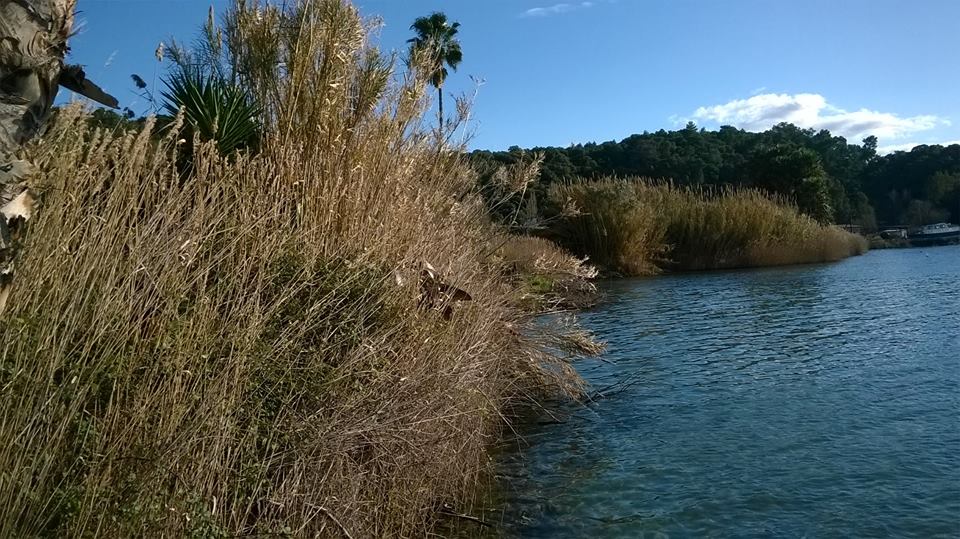
Phragmites is a genus of four species of large perennial grasses found in wetlands throughout temperate and tropical regions of the world ( https://en.wikipedia.org/wiki/Phragmites ).
------------------------------------------------------------
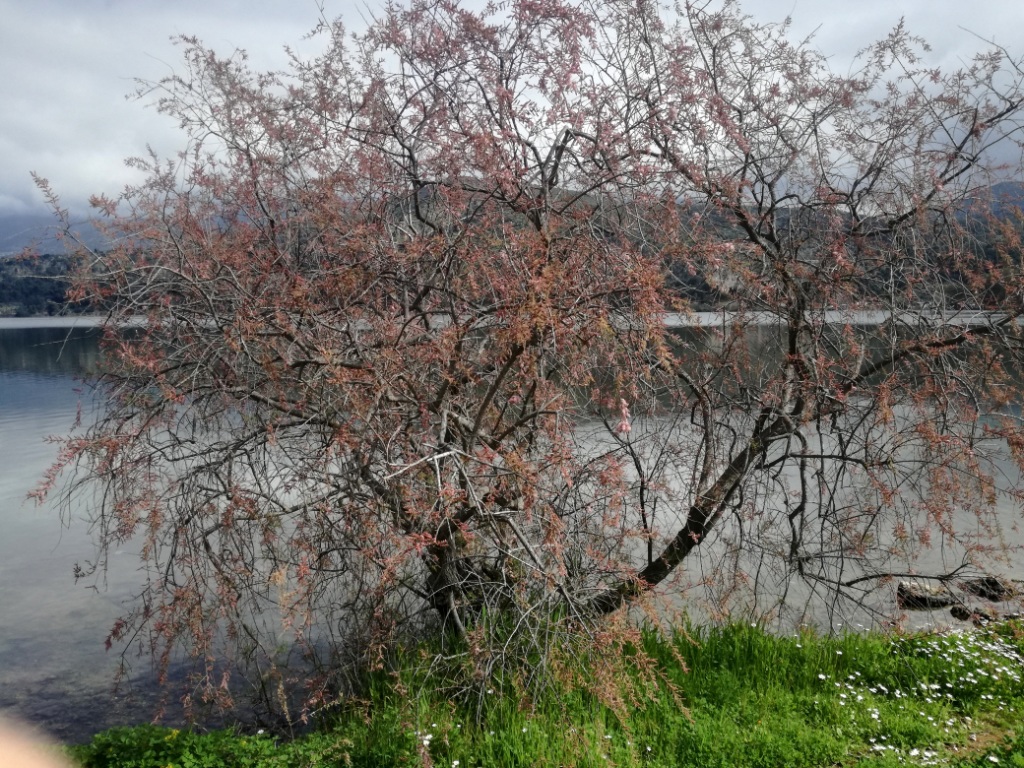
The genus Tamarix (tamarisk, salt cedar) is composed of about 50–60 species of flowering in the family Tamaricaceae, native to drier areas of Eurasia and Africa. The generic name originated in Latin and may refer to the Tamaris River in Hispania Tarraconensis (Spain) ( https://en.wikipedia.org/wiki/Tamarix ).
-------------------------------------------------
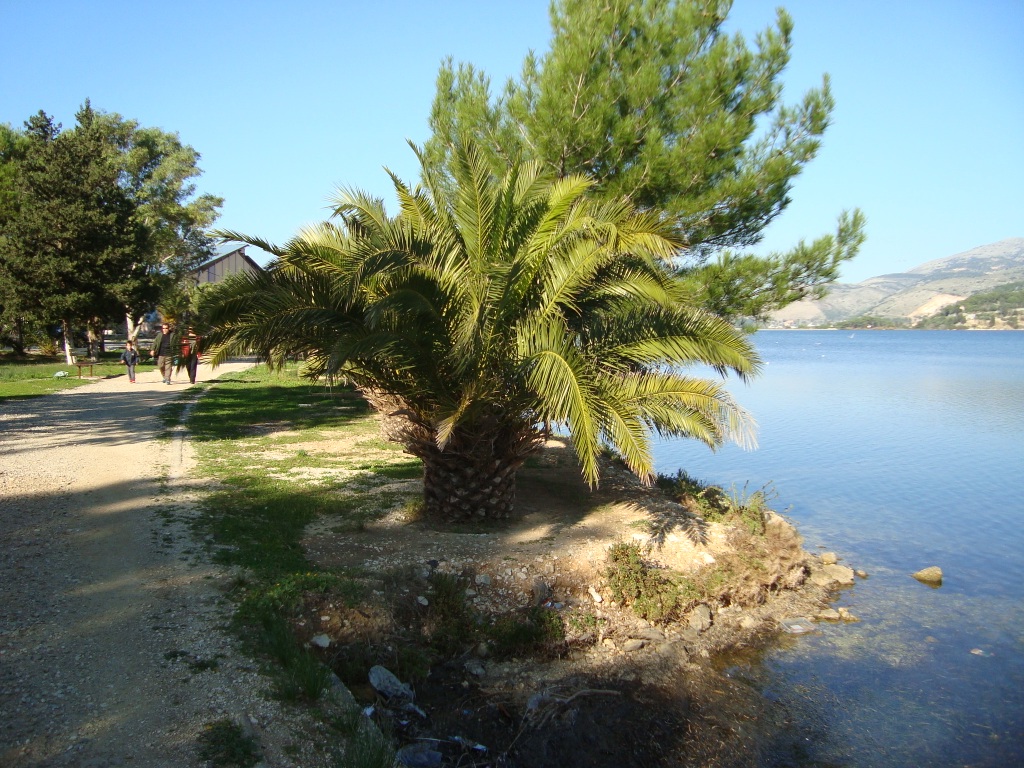
The Arecaceae are a botanical family of perennial plants. Their growth form can be climbers, shrubs, trees and stemless plants, all commonly known as palms. Those having a tree form are colloquially called palm trees. They are flowering plants, a family in the monocot order Arecales. Currently 181 genera with around 2,600 species are known, most of them restricted to tropical and subtropical climates. Most palms are distinguished by their large, compound, evergreen leaves, known as fronds, arranged at the top of an unbranched stem. However, palms exhibit an enormous diversity in physical characteristics and inhabit nearly every type of habitat within their range, from rainforests to deserts ( https://en.wikipedia.org/wiki/Arecaceae ).
-----------------------------------------------------
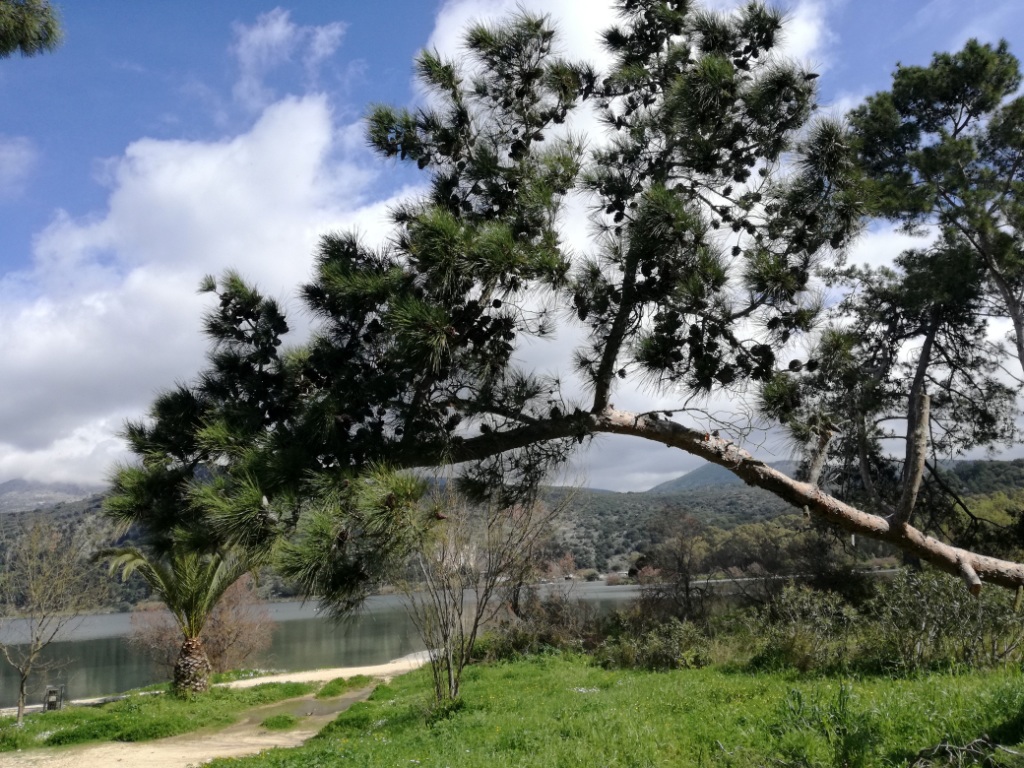
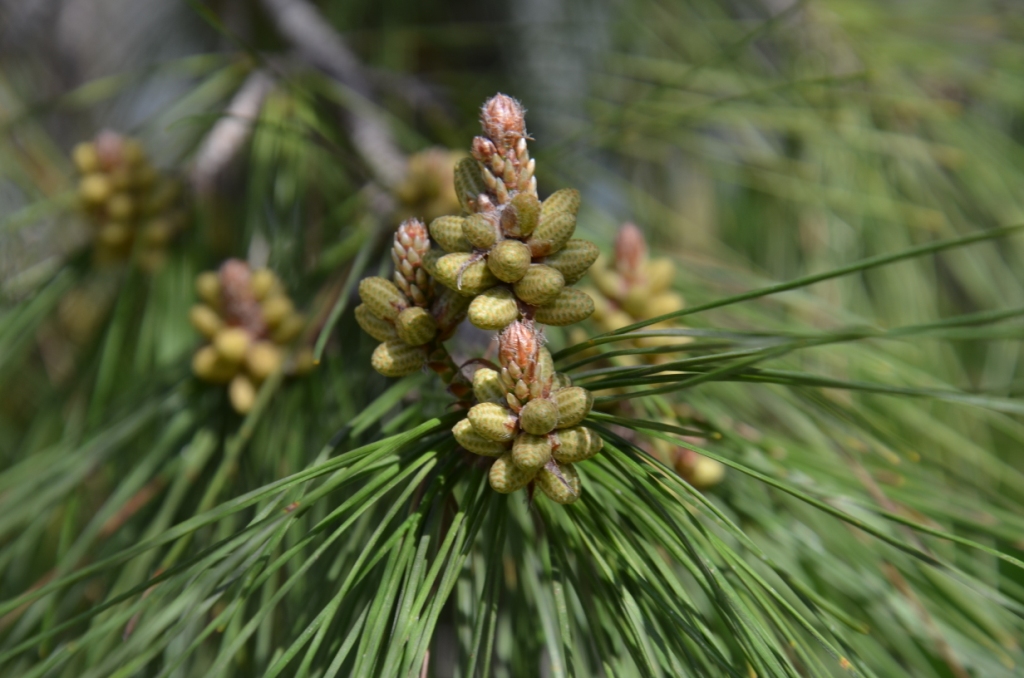
Pinus halepensis, commonly known as the Aleppo pine, is a pine native to the Mediterranean region. Its range extends from Morocco, Algeria and Spain north to southern France, Italy, Croatia, Montenegro, Albania, and east to Greece, all over Malta and northern Tunisia, with an outlying population (from which it was first described) in Syria, Lebanon, southern Turkey, Jordan, Israel, and Palestinian territories ( https://en.wikipedia.org/wiki/Pinus_halepensis ).
-----------------------------------------------
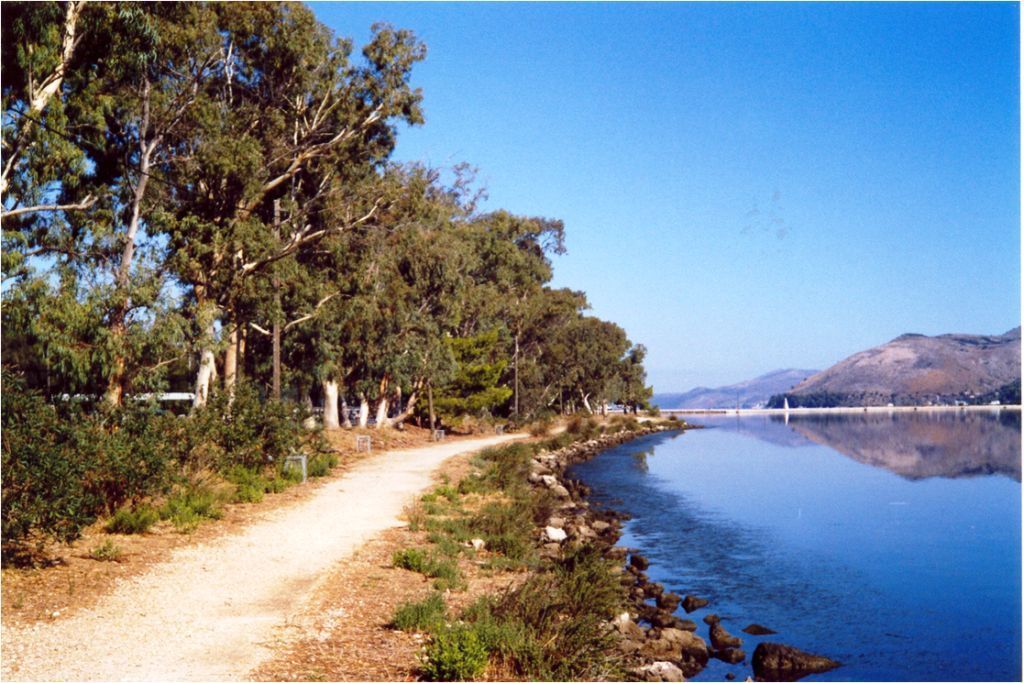
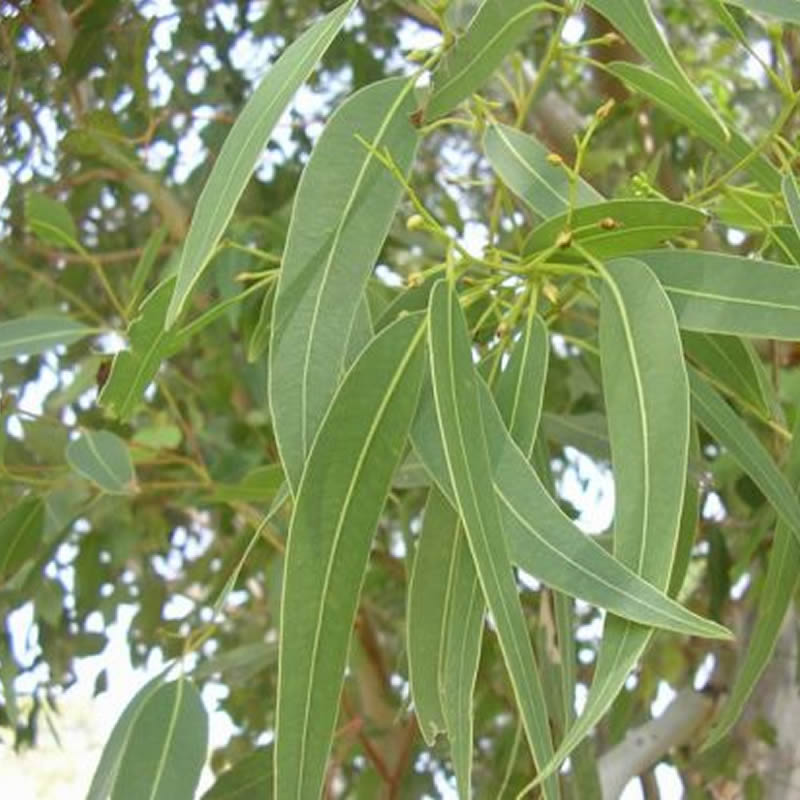
Eucalyptus (plural eucalypti, eucalyptuses or eucalypts) is a diverse genus of flowering trees and shrubs (including a distinct group with a multiple-stem mallee growth habit) in the myrtle family, Myrtaceae ( https://en.wikipedia.org/wiki/Eucalyptus ).
----------------------------------------------
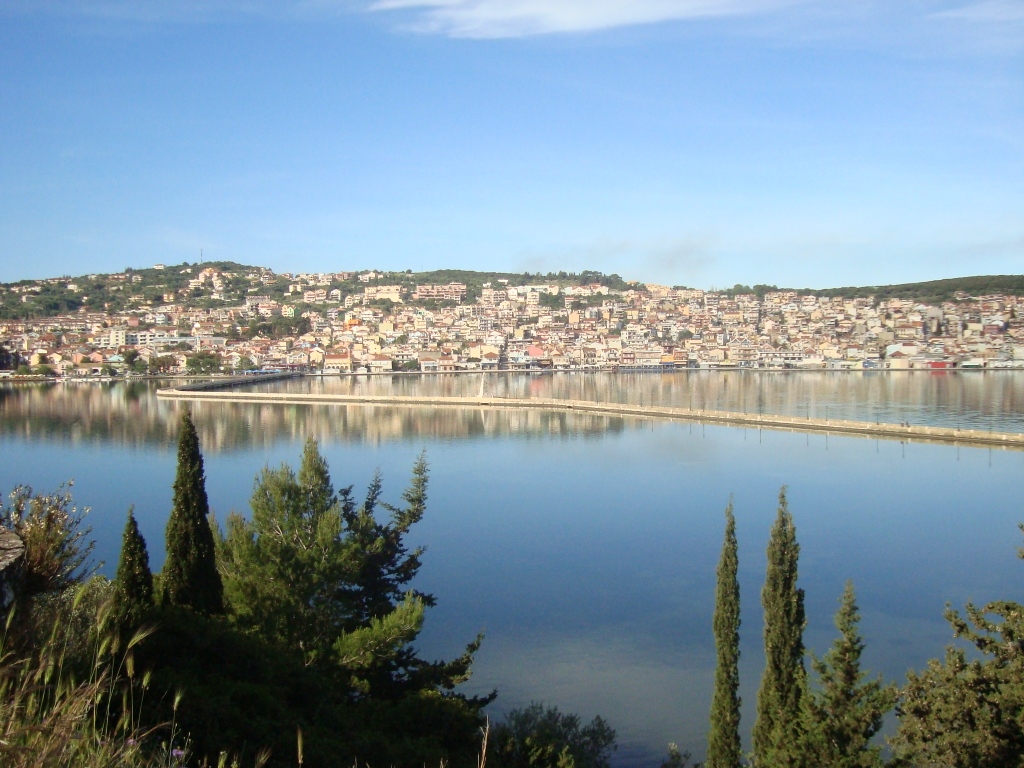
Cupressus sempervirens, the Mediterranean cypress (also known as Italian cypress, Tuscan cypress, Persian cypress, or pencil pine), is a species of cypress native to the eastern Mediterranean region, in northeast Libya, southern Albania, southern coastal Croatia (Dalmatia), southern Montenegro, southern Greeece, southern Turkey, Cyprus, northern Egypt, western Syria, Lebanon, Malta, Italy, Israel, western Jordan, and also a disjunct population in Iran. Cupressus sempervirens is a medium-sized coniferous evergreen tree to 35 m tall, with a conic crown with level branches and variably loosely hanging branchlets. It is very long-lived, with some trees reported to be over 1,000 years old ( https://en.wikipedia.org/wiki/Cupressus_sempervirens ).
-------------------------------------
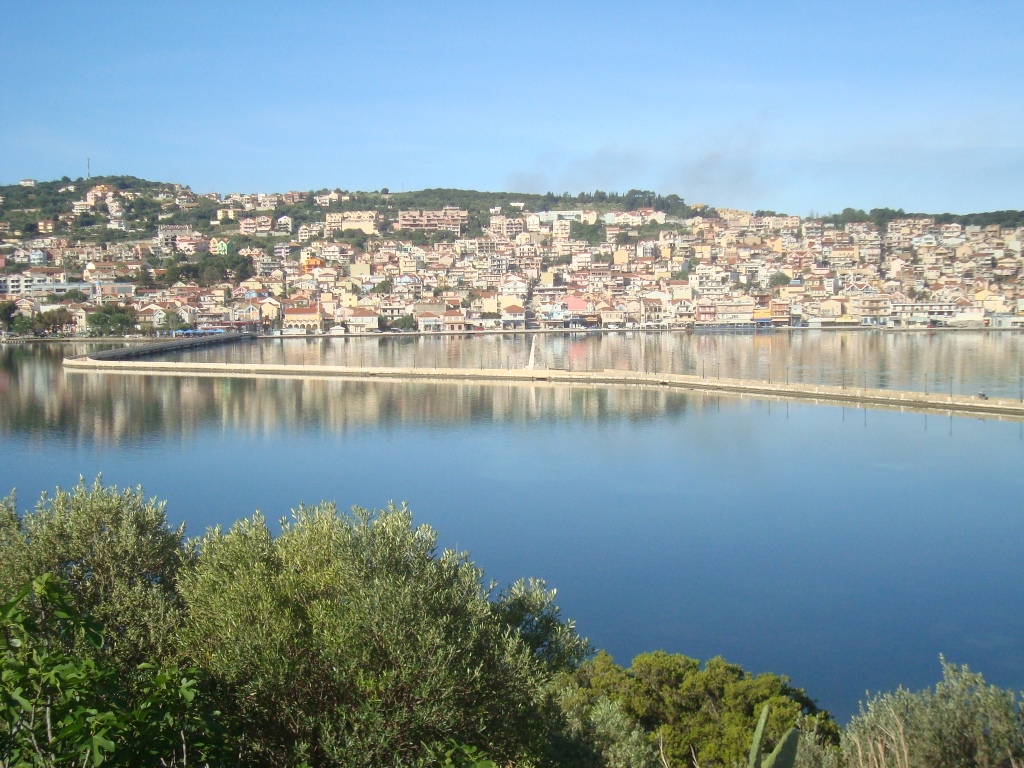
Olea is a genus of about 40 species in the family Oleaceae, native to warm temperate and tropical regions of the Middle East, southern Europe, Africa, southern Asia, and Australasia. They are evergreen trees and shrubs, with small, opposite, entire leaves. The fruit is a drupe. Leaves of Olea contain trichosclereids. For humans, the most important species is by far the olive (Olea europaea), native to the Mediterranean region, Africa, southwest Asia, and the Himalayas, which is the type species of the genus ( https://en.wikipedia.org/wiki/Olea ).
-------------------------------------------------
B2) Representative species of fauna.
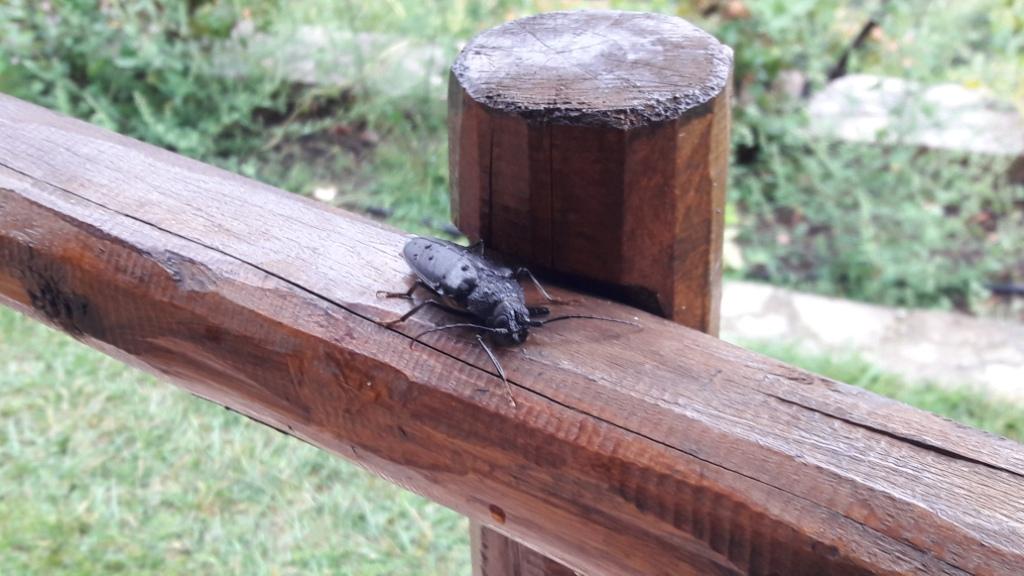
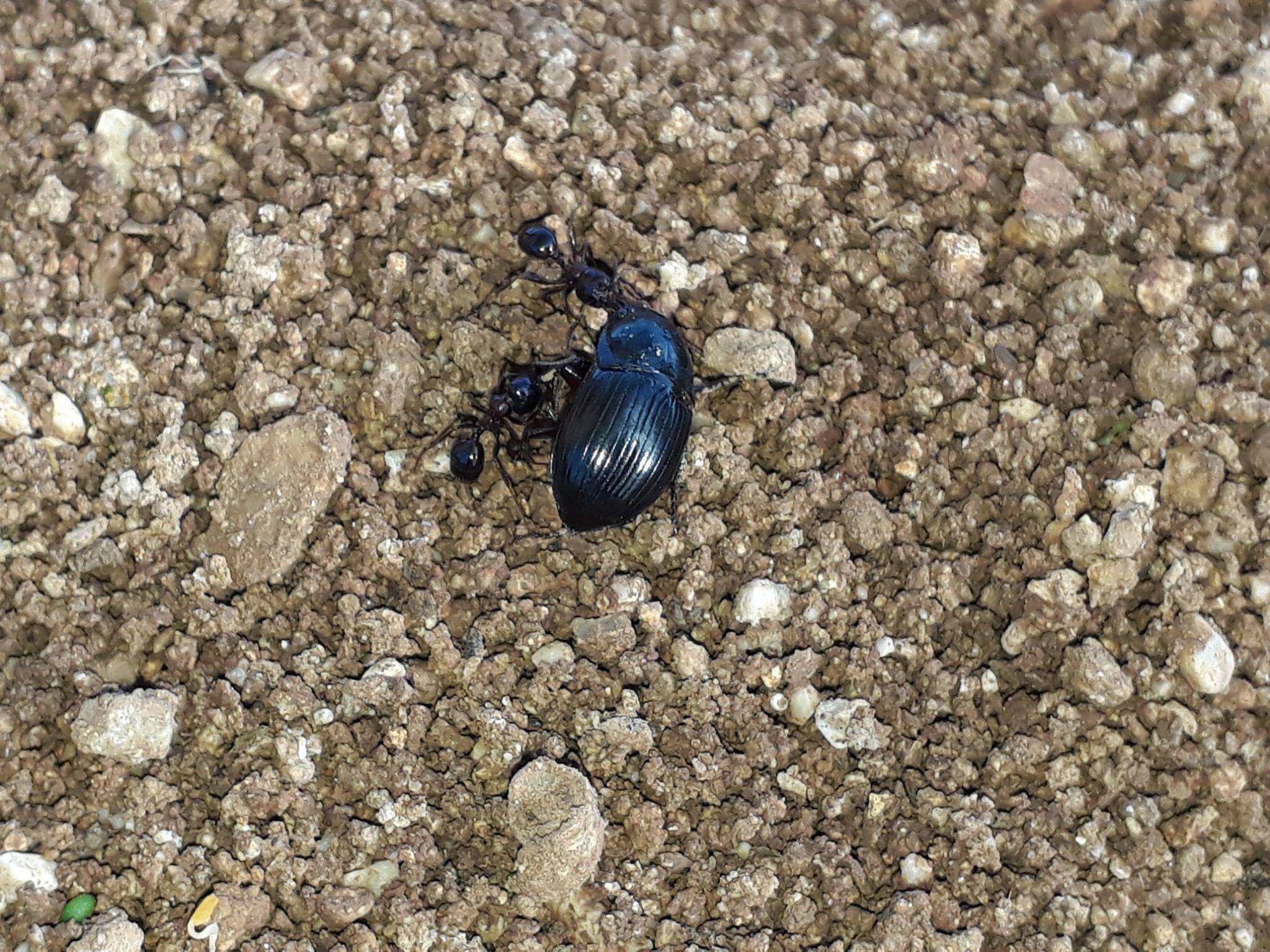
Beetles are a group of insects that form the order Coleoptera, in the superorder Endopterygota. Their front pair of wings is hardened into wing-cases, elytra, distinguishing them from most other insects. The Coleoptera, with about 400,000 species, is the largest of all orders, constituting almost 40% of described insects and 25% of all known animal life-forms; new species are discovered frequently. The largest of all families, the Curculionidae (weevils) with some 70,000 member species, belongs to this order. They are found in almost every habitat except the sea and the polar regions. They interact with their ecosystems in several ways: beetles often feed on plants and fungi, break down animal and plant debris, and eat other invertebrates ( https://en.wikipedia.org/wiki/Beetle ).
Ants are eusocial insects of the family Formicidae and, along with the related wasps and bees, belong to the order Hymenoptera. Ants evolved from wasp-like ancestors in the Cretaceous period, about 140 million years ago, and diversified after the rise of flowering. More than 12,500 of an estimated total of 22,000 species have been classified. They are easily identified by their elbowed antennae and the distinctive node-like structure that forms their slender waists ( https://en.wikipedia.org/wiki/Ant ).
-------------------------------------------
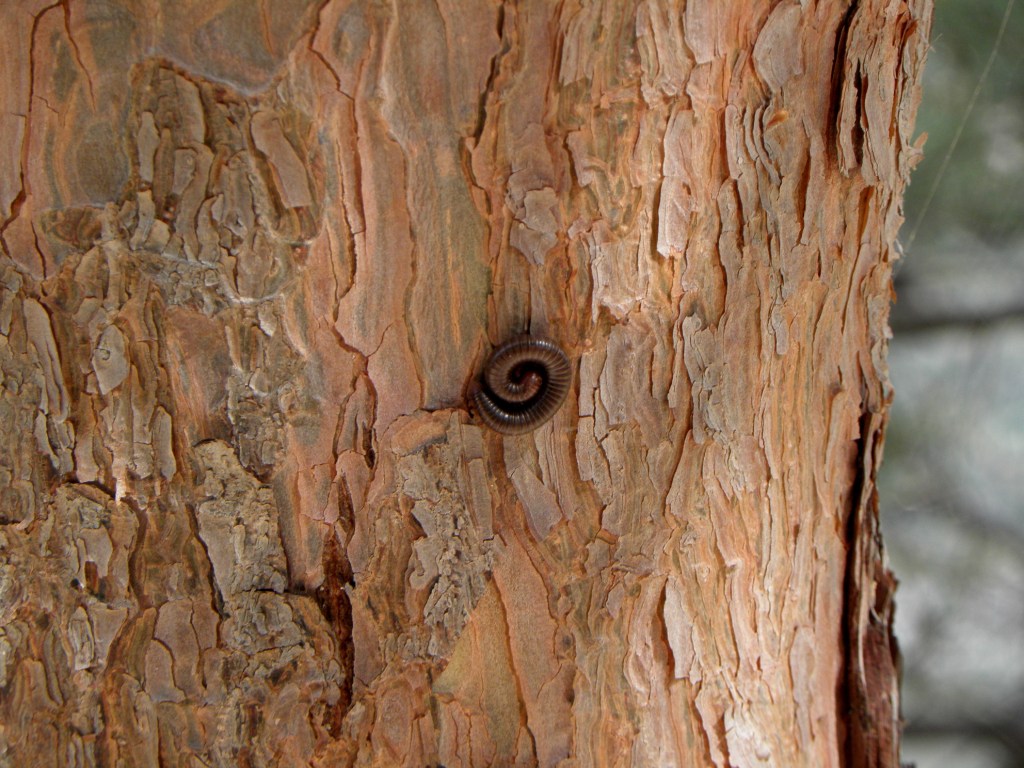
Millipedes are a group of artropods that are characterised by having two pairs of jointed legs on most body segments; they are known scientifically as the class Diplopoda, the name being derived from this feature. Each double-legged segment is a result of two single segments fused together. Most millipedes have very elongated cylindrical or flattened bodies with more than 20 segments, while pill millipedes are shorter and can roll into a ball. Although the name "millipede" derives from the Latin for "thousand feet", no known species has 1,000; the record of 750 legs belongs to Illacme plenipes. There are approximately 12,000 named species classified into 16 orders and around 140 families, making Diplopoda the largest class of myriapods, an arthropod group which also includes centipedes and other multi-legged creatures ( https://en.wikipedia.org/wiki/Millipede ).
-------------------------------------------
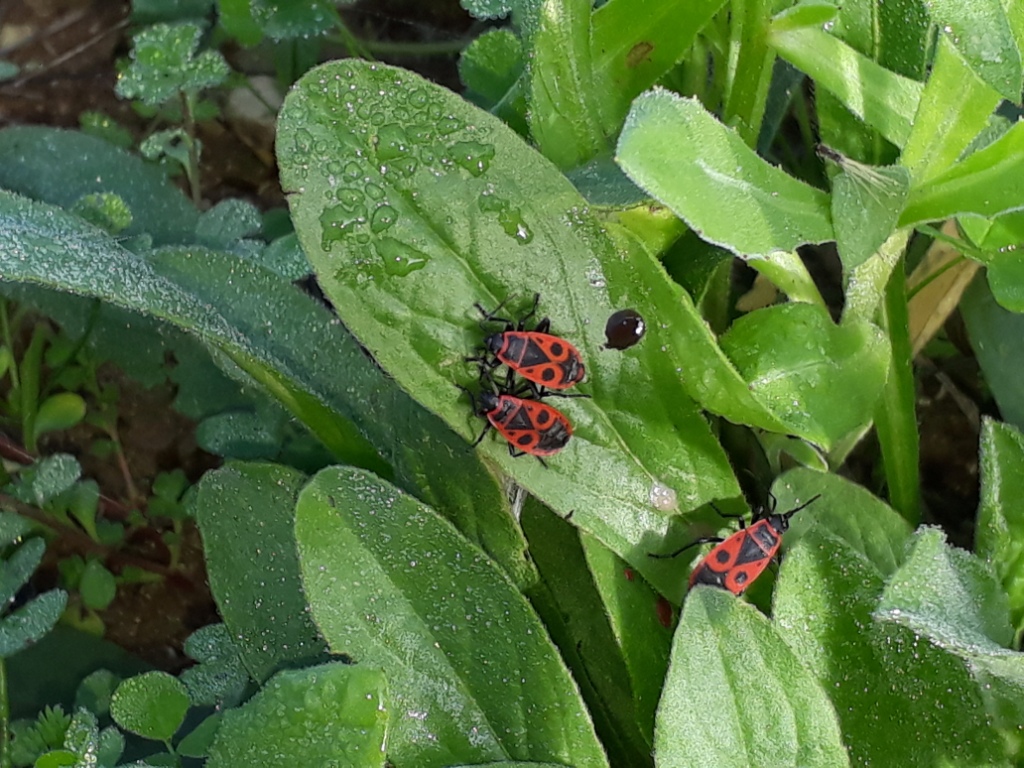
The firebug, Pyrrhocoris apterus, is a common insect of the family Pyrrhocoridae. Easily recognizable due to its striking red and black coloration, but may be confused with the similarly coloured though unrelated Corizus hyoscyam (cinnamon bug, squash bug). Pyrrhocoris apterus is distributed throughout the Palaearctic from the Atlantic coast of Europe to northwest China. It has also been reported from the USA, Central America and India. It has been reported as recently expanding its distribution northwards into mainland UK. They are frequently observed to form aggregations, especially as immature forms, with from tens to perhaps a hundred individuals ( https://en.wikipedia.org/wiki/Pyrrhocoris_apterus ).
--------------------------------------------
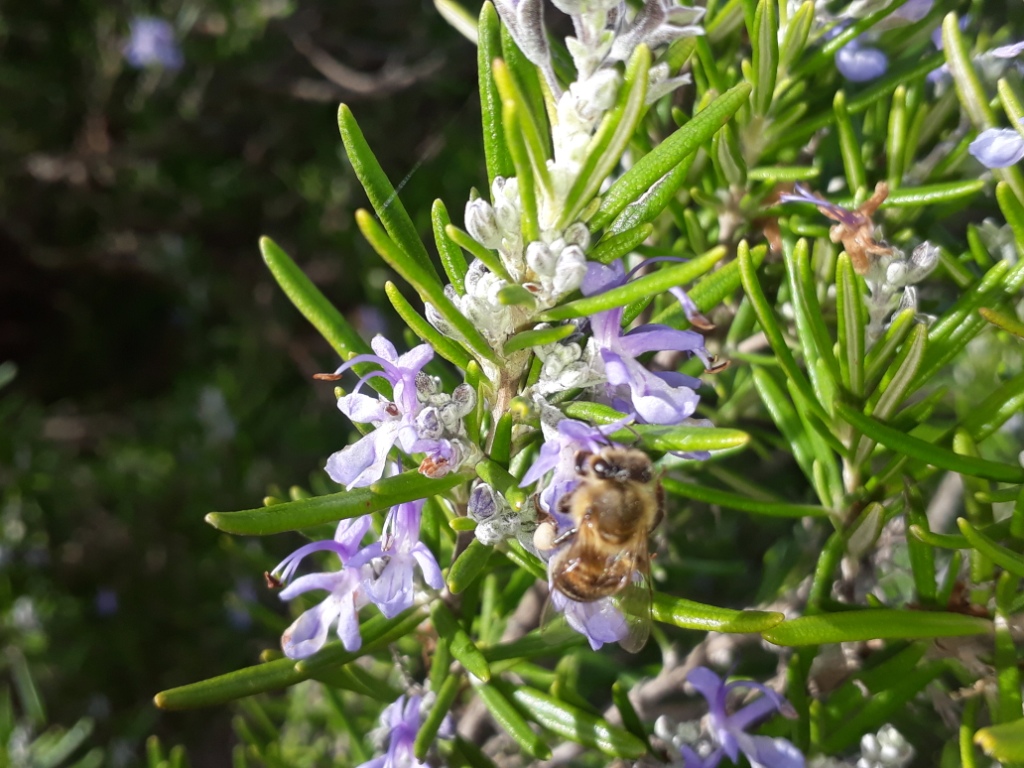

A honey bee (or honeybee) is a eusocial, flying insect within the genus Apis of the bee clade. They are known for construction of perennial, colonial nests from wax, for the large size of their colonies, and for their surplus production and storage of honey, distinguishing their hives as a prized foraging target of many animals, including honey badgers, bears and human hunter-gatherers. In the early 21st century, only seven species of honey bee are recognized, with a total of 44 subspecies, though historically seven to eleven species are recognized. The best known honey bee is the Western honey bee which has been domesticated for honey production and crop pollination; modern humans also value the wax for candle making and other crafts. Honey bees represent only a small fraction of the roughly 20,000 known species of bees. Some other types of related bees produce and store honey and have been kept by humans for that purpose, including the stingless honey bees, but only members of the genus Apis are true honey bees. The study of bees, which includes the study of honey bees, is known as melittology ( https://en.wikipedia.org/wiki/Honey_bee ).
---------------------------------------------------
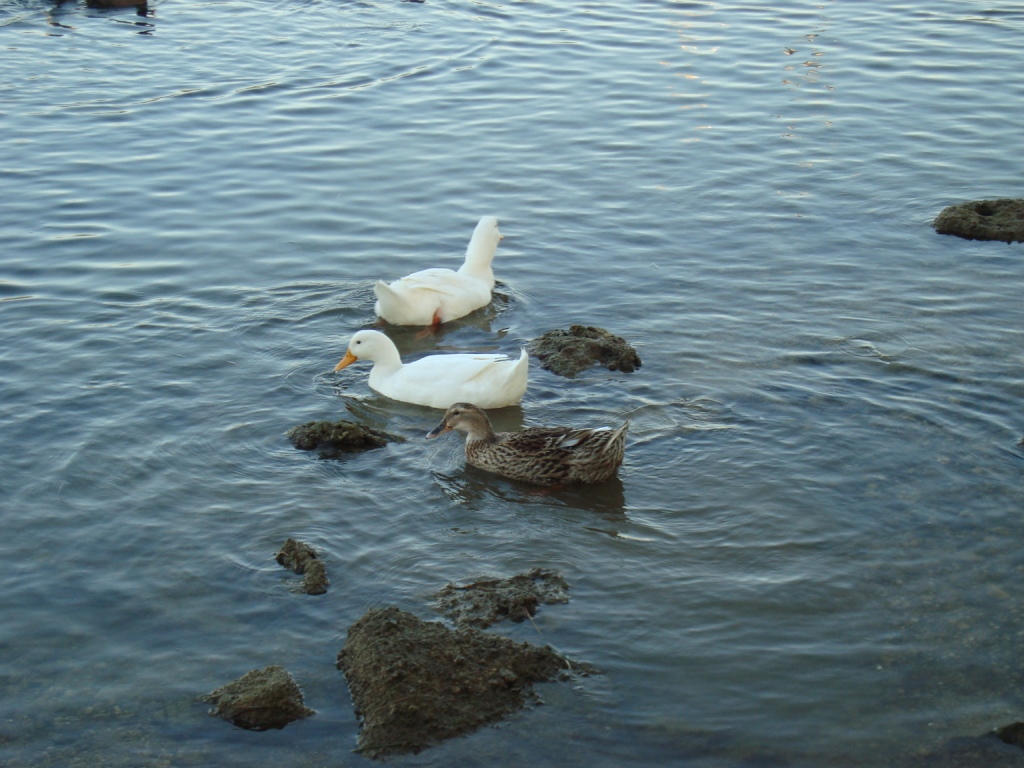
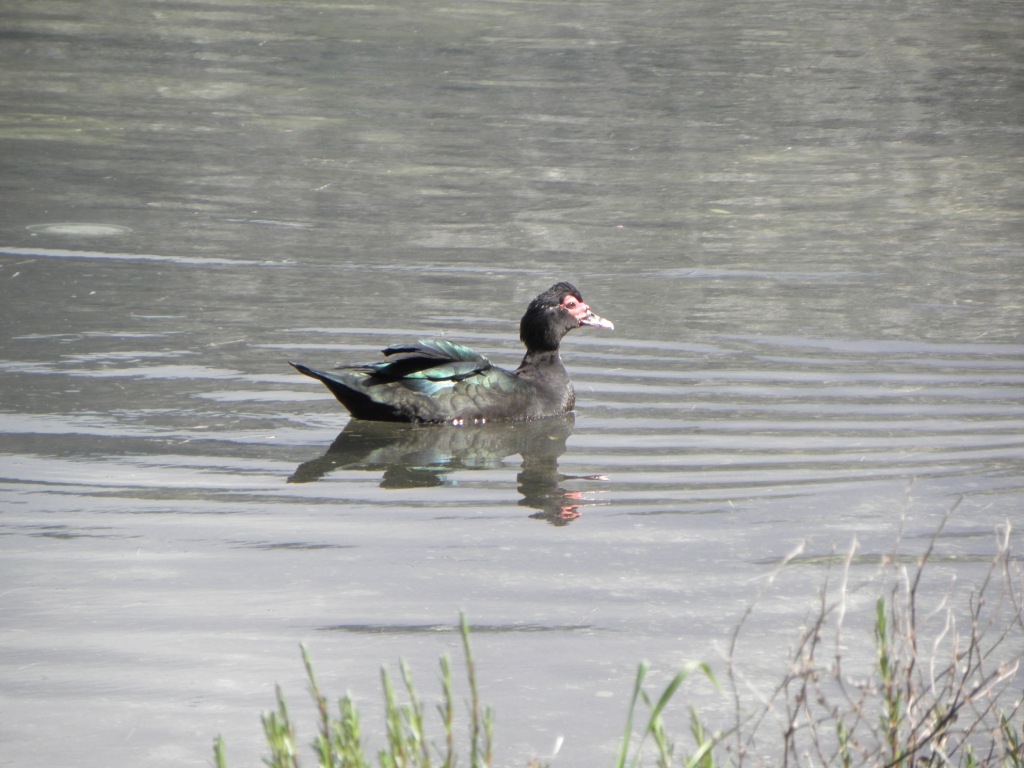
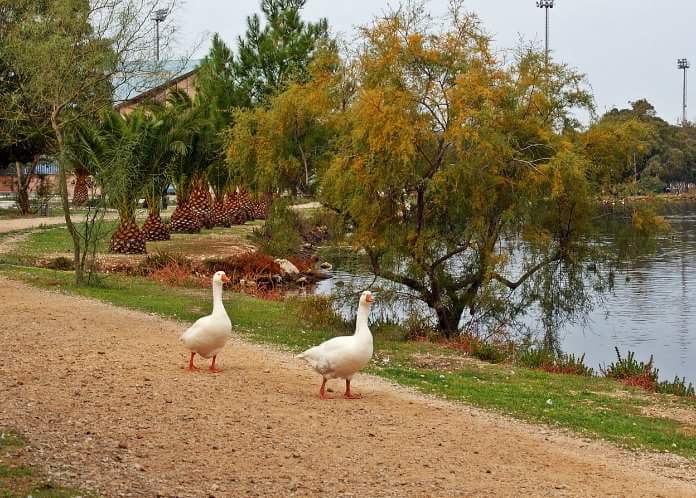
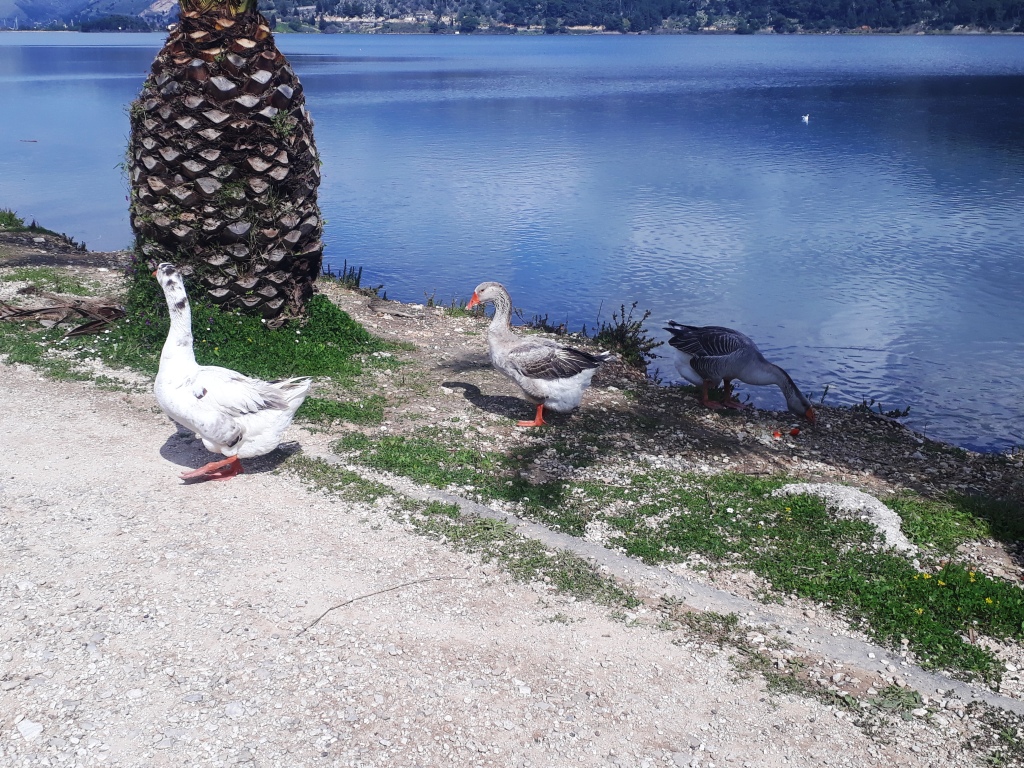
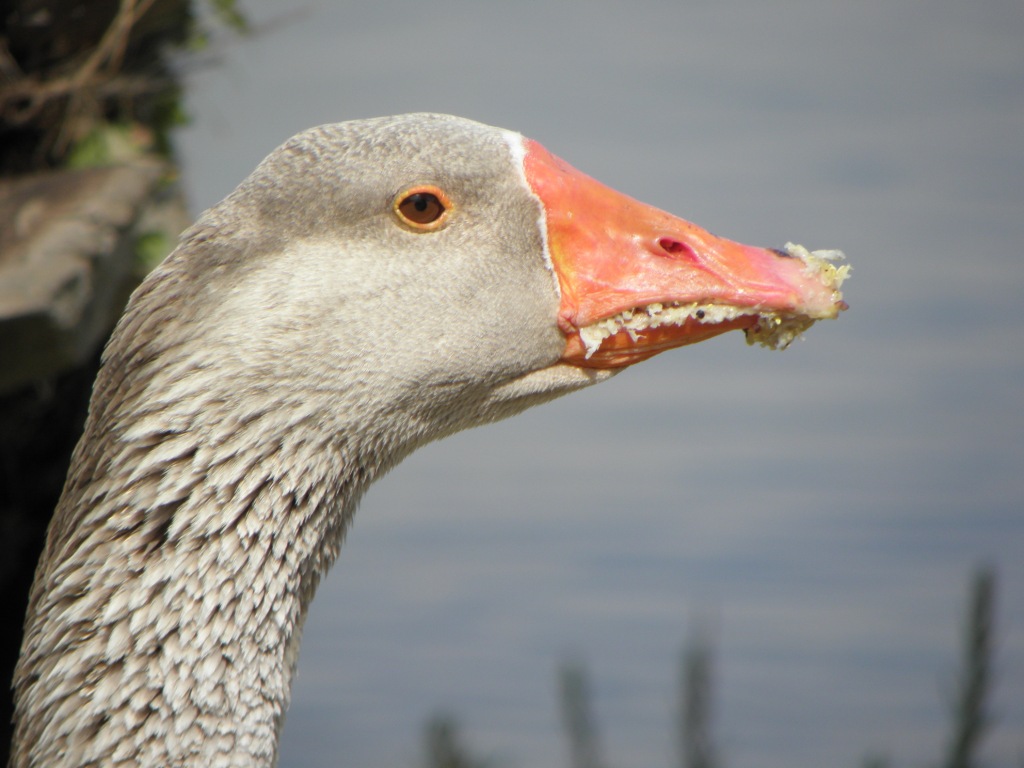
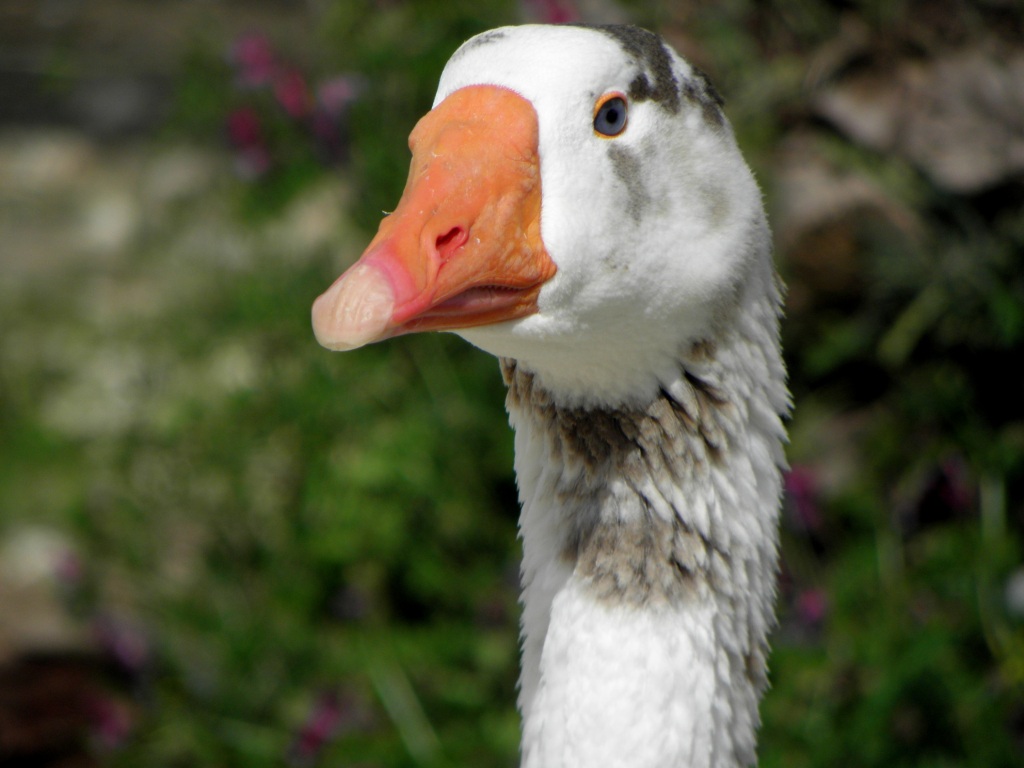
Duck is the common name for a large number of species in the waterfowl family Anatidae which also includes swans and geese. Ducks are divided among several subfamilies in the family Anatidae; they do not represent a monophyletic group (the group of all descendants of a single common ancestral species) but a form taxon, since swans and geese are not considered ducks. Ducks are mostly aquatic birds, mostly smaller than the swans and geese, and may be found in both fresh water and sea water ( https://en.wikipedia.org/wiki/Duck ).
Domestic geese (Anser anser domesticus or Anser cygnoides domesticus) are domesticated grey geese (either graylag geese or swan geese) that are kept by humans as poultry for their meat, eggs, and down feathers since ancient times ( https://en.wikipedia.org/wiki/Domestic_goose, https://en.wikipedia.org/wiki/Swan_goose ).
---------------------------------------
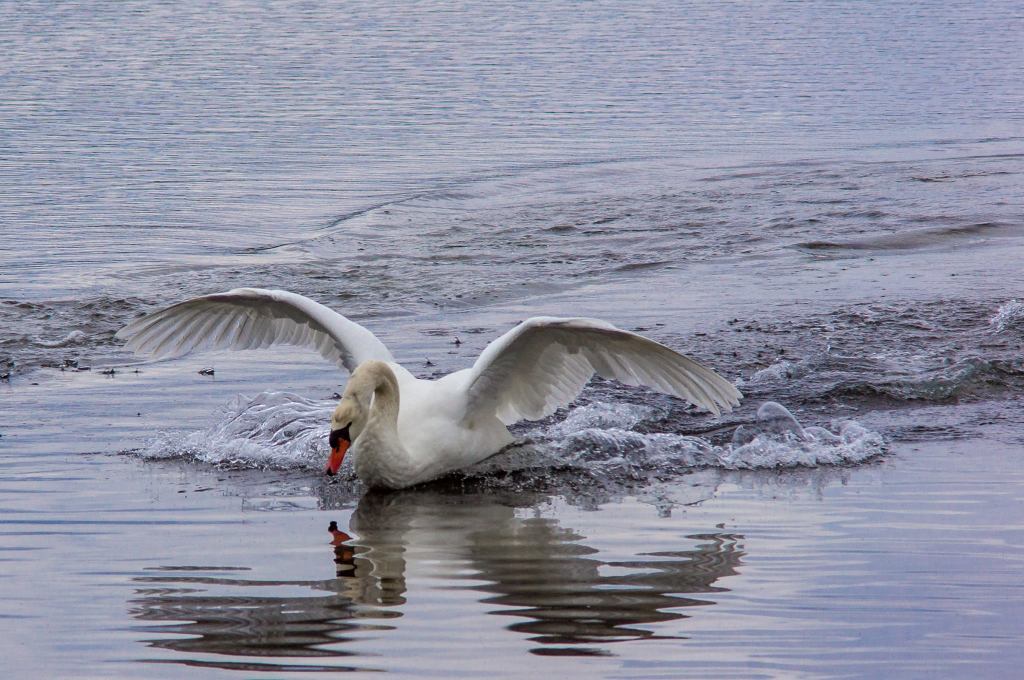

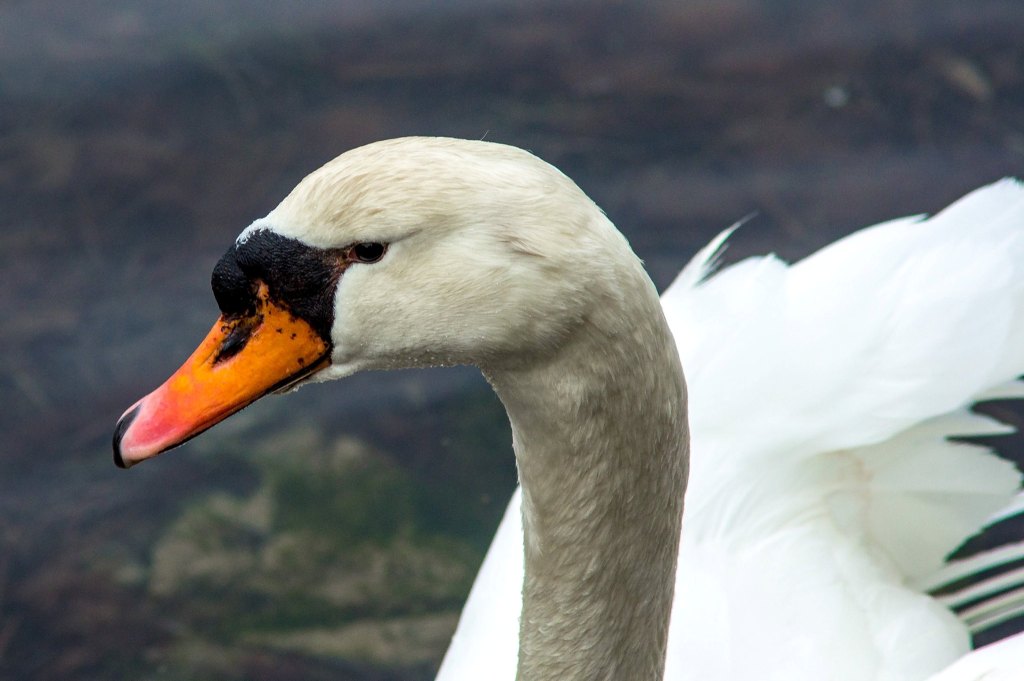
Swans are birds of the family Anatidae within the genus Cygnus. The swans' close relatives include the geese and ducks. Swans are grouped with the closely related geese in the subfamily Anserinae where they form the tribe Cygnini. Sometimes, they are considered a distinct subfamily, Cygninae. There are six or seven living (and one extinct) species of swan in the genus Cygnus; in addition, there is another species known as the coscoroba swan, although this species is no longer considered one of the true swans. Swans usually mate for life, although “divorce” sometimes occurs, particularly following nesting failure, and if a mate dies, the remaining swan will take up with another. The number of eggs in each clutch ranges from three to eight ( https://en.wikipedia.org/wiki/Swan ).
--------------------------------
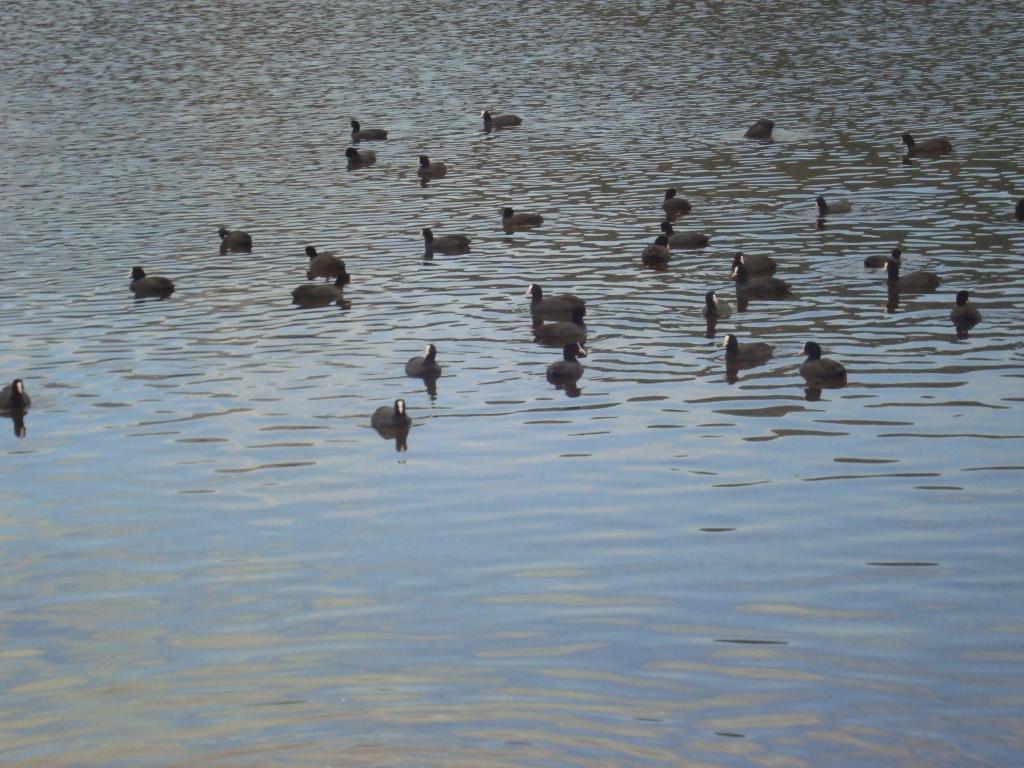
The Eurasian coot (Fulica atra), also known as the common coot, is a member of the rail and crake bird family, the Rallidae. The scientific name is from Latin; Fulica is "coot", and atra is "black". It is found in Europe, Asia, Australia and parts of Africa ( https://en.wikipedia.org/wiki/Eurasian_coot ).
-------------------------------------
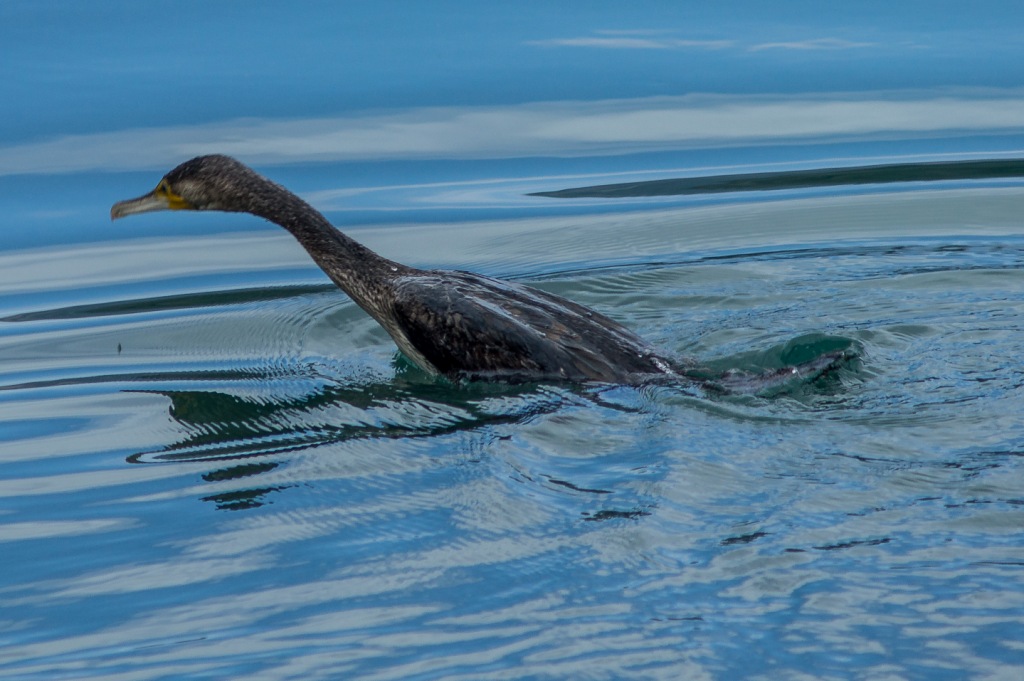
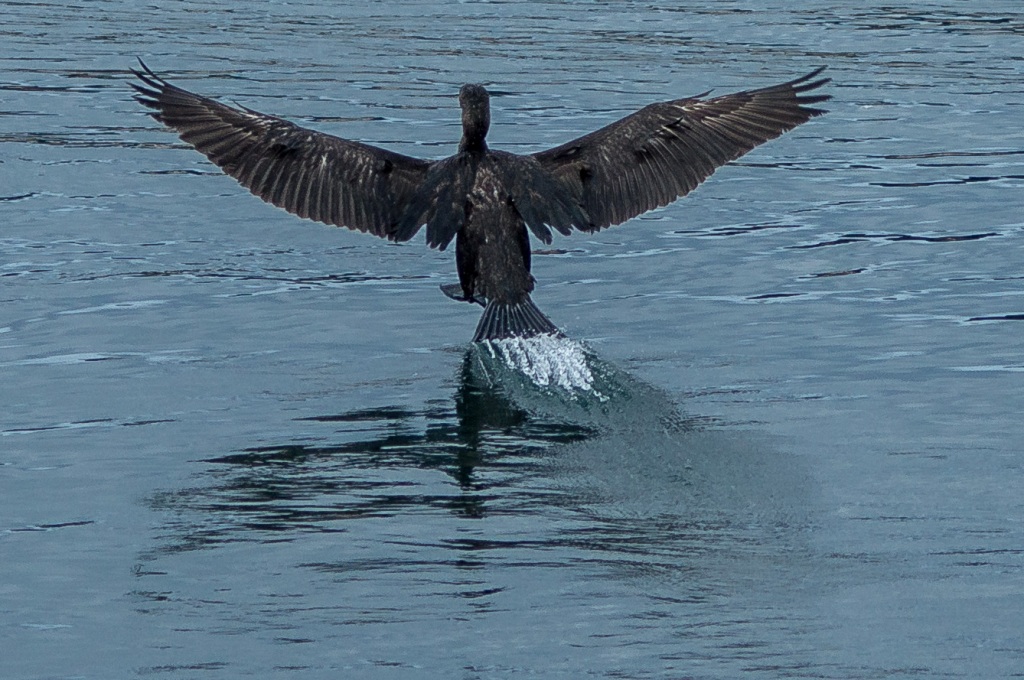
The great cormorant (Phalacrocorax carbo), known as the great black cormorant across the Northern Hemisphere, the black cormorant in Australia, the large cormorant in India and the black shag further south in New Zealand, is a widespread member of the cormorant family of seabirds. The genus name is Latinised Ancient Greek from φαλακρός (phalakros, "bald") and κόραξ (korax, "raven"), and carbo is Latin for "charcoal" ( https://en.wikipedia.org/wiki/Great_cormorant ).
-----------------------------------
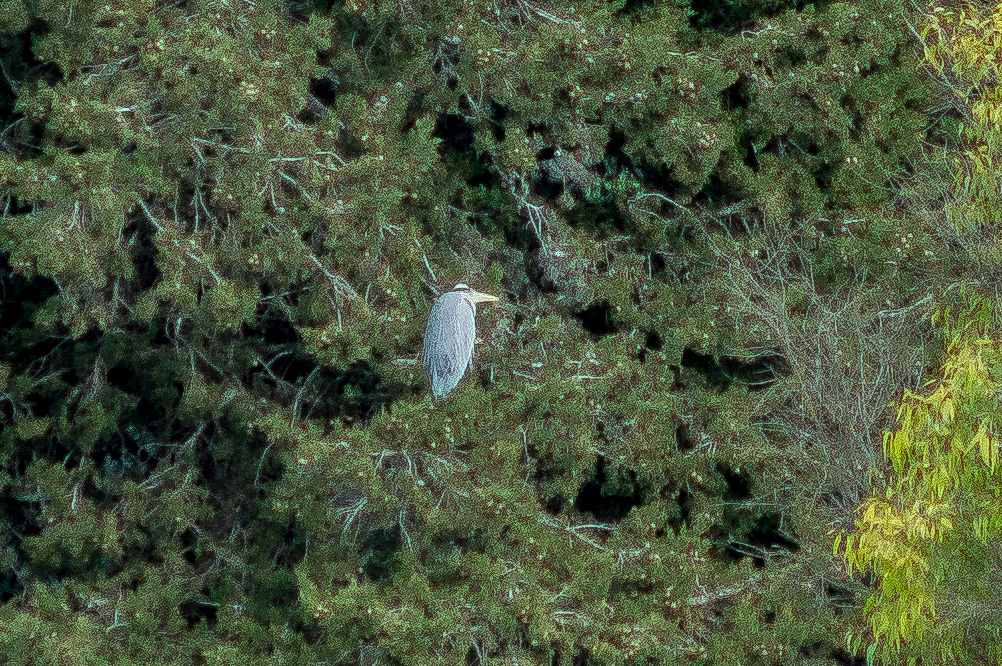
The grey heron (Ardea cinerea) is a long-legged predatory wading bird of the heron family, Ardeidae, native throughout temperate Europe and Asia and also parts of Africa. It is resident in much of its range, but some populations from the more northern parts migrate southwards in autumn. A bird of wetland areas, it can be seen around lakes, rivers, ponds, marshes and on the sea coast. It feeds mostly on aquatic creatures which it catches after standing stationary beside or in the water or stalking its prey through the shallows ( https://en.wikipedia.org/wiki/Grey_heron ).
---------------------------
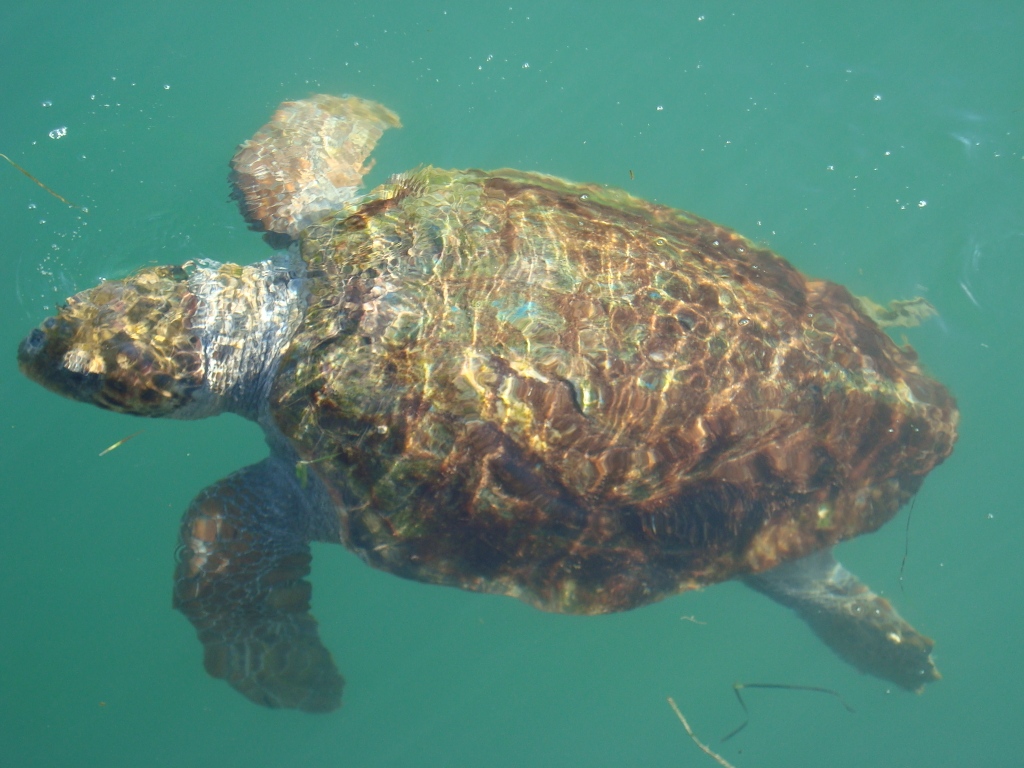
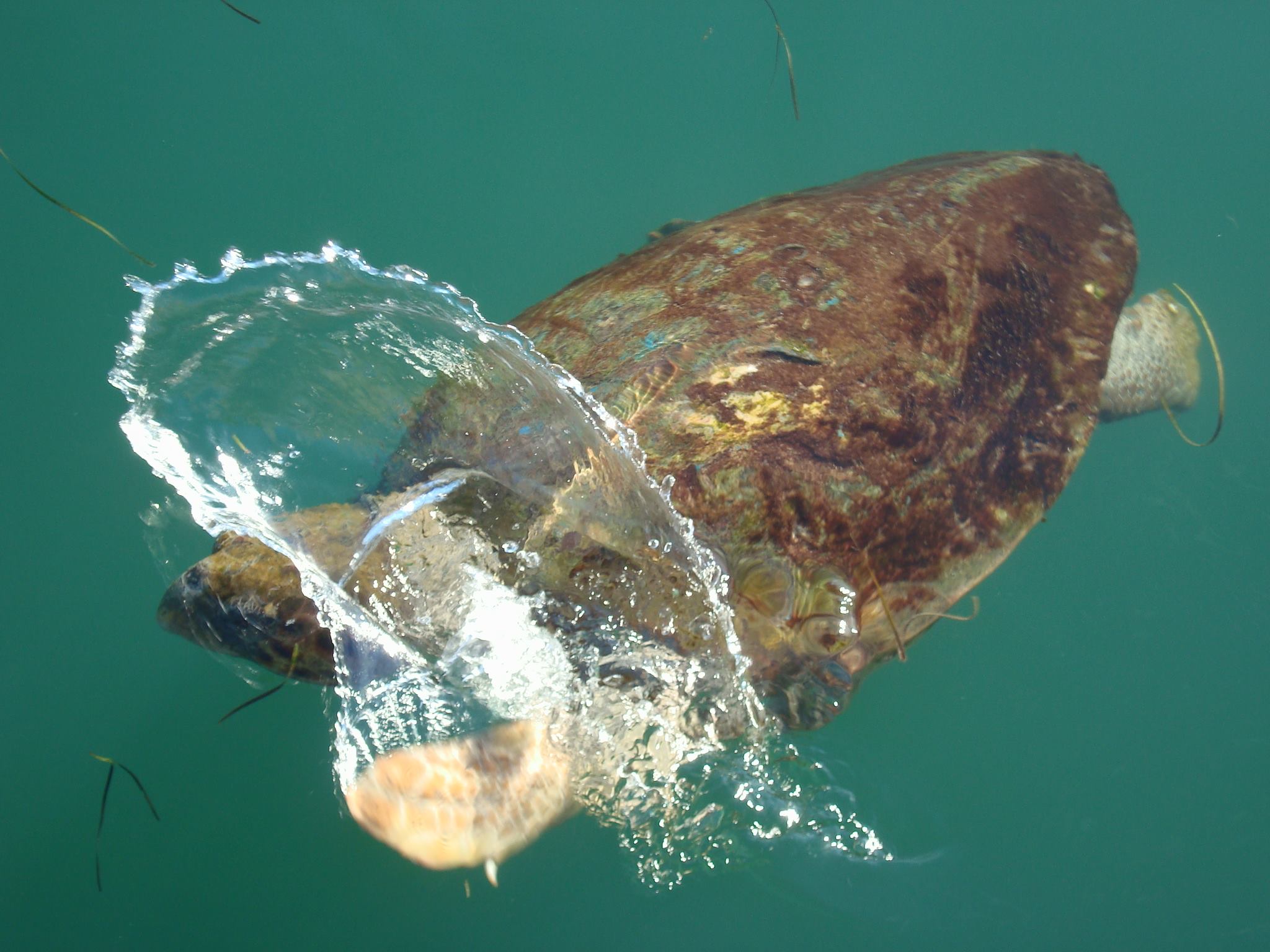
The loggerhead sea turtle (Caretta caretta), or loggerhead, is an oceanic turtle distributed throughout the world. It is a marine reptile, belonging to the family Chelonidae. The average loggerhead measures around 90 cm (35 in) long when fully grown, although larger specimens of up to 280 cm have been discovered. The adult loggerhead sea turtle weighs approximately 135 kg, with the largest specimens weighing in at more than 450 kg. The skin ranges from yellow to brown in color, and the shell is typically reddish brown. No external differences in sex are seen until the turtle becomes an adult, the most obvious difference being the adult males have thicker tails and shorter plastrons (lower shells) than the females ( https://en.wikipedia.org/wiki/Loggerhead_sea_turtle ).
-------------------------------------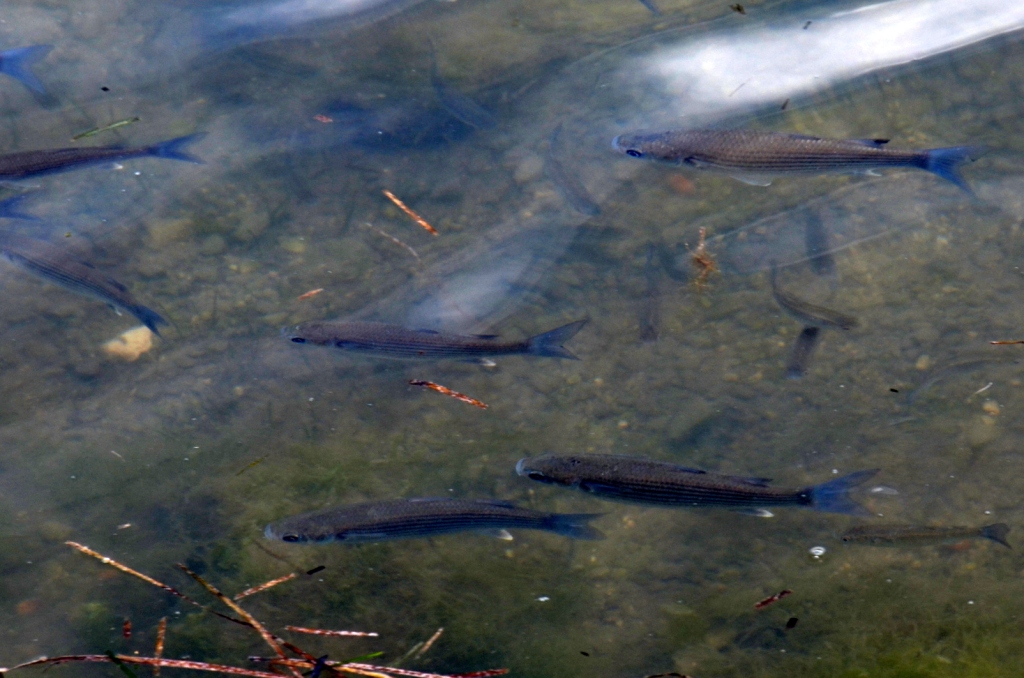
The most seen fish in Koutavos lagoon are: a) The striped mullet Mugil cephalus (Linnaeus 1758), b) The sea beam Sparus aurata (Linnaeus 1758), c) The European sea bass Dicentrarchus labrax (Linnaeus 1758), and d) The sand steenbras Lithognathus mormyrus (Linnaeus 1758).
The flathead grey mullet (Mugil cephalus) is an important food fish species in the mullet family Mugilidae. It is found in coastal tropical and subtropical waters worldwide. It is known with numerous English names, including the flathead mullet, striped mullet (US, American Fisheries Society name), black mullet, bully mullet, common mullet, grey mullet, sea mullet and mullet, among others ( https://en.wikipedia.org/wiki/Flathead_grey_mullet ).
The gilt-head (sea) bream (Sparus aurata) is a fish of the bream family Sparidae found in the Mediterranean sea and the eastern coastal regions of the North Atlantic. The gilt-head bream is generally considered the best-tasting of the breams. It is the single species of the genus Sparus – the Latin name for this fish – which has given the whole family of Sparidae its name. Its specific name, aurata, derives from the gold bar marking between its eyes ( https://en.wikipedia.org/wiki/Gilt-head_bream ).
The European bass (Dicentrarchus labrax) is a primarily ocean-going fish native to the waters off Europe’s western and southern and Africa’s's northern coasts, though it can also be found in shallow coastal waters and river mouths during the summer months. It is one of only six species in its family, Moronidae, collectively called the temperate basses. It is both fished and raised commercially, and is considered to be the most important fish currently cultured in the Mediterranean ( https://en.wikipedia.org/wiki/European_bass ).
The sand steenbras or striped seabream (Lithognathus mormyrus) is a species of marine fish in the family Sparidae. It is found in shallow water in the Mediterranean Sea and in the eastern Atlantic Ocean from France to South Africa. It also occurs in the Red Sea and off the coast of Mozambique in the Indian Ocean. The IUCN has assessed its conservation status as being of "least concern" ( https://en.wikipedia.org/wiki/Sand_steenbras ).
All the photos of flora and fauna of Koutavos lagoon were taken by the Greek team!
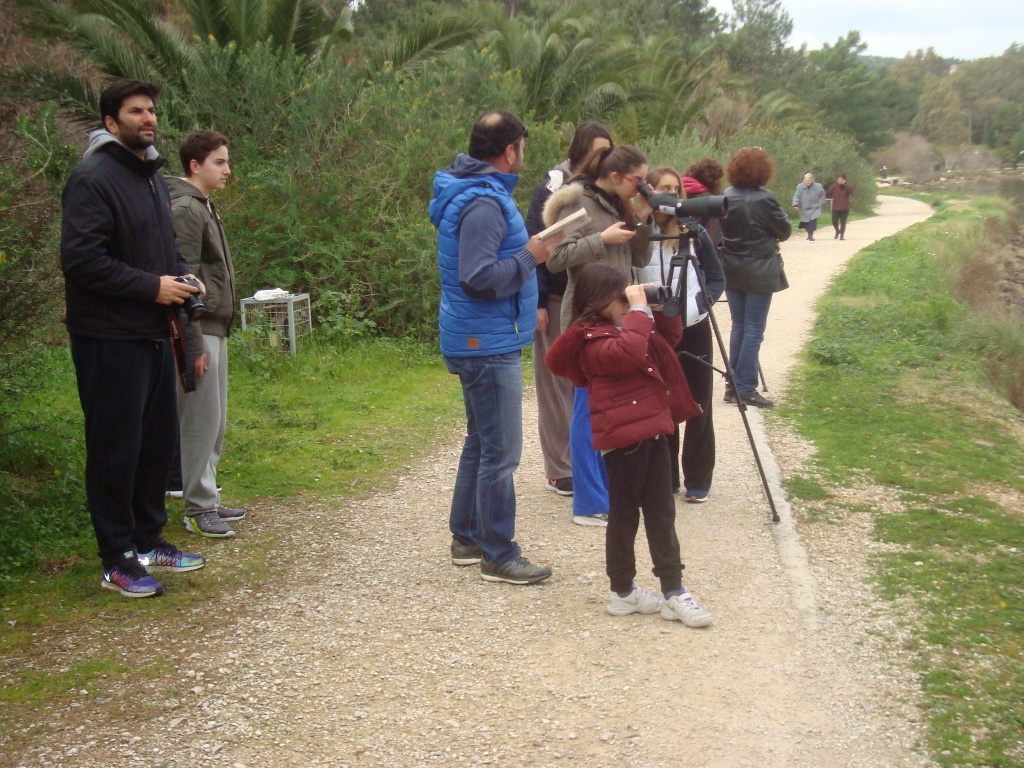
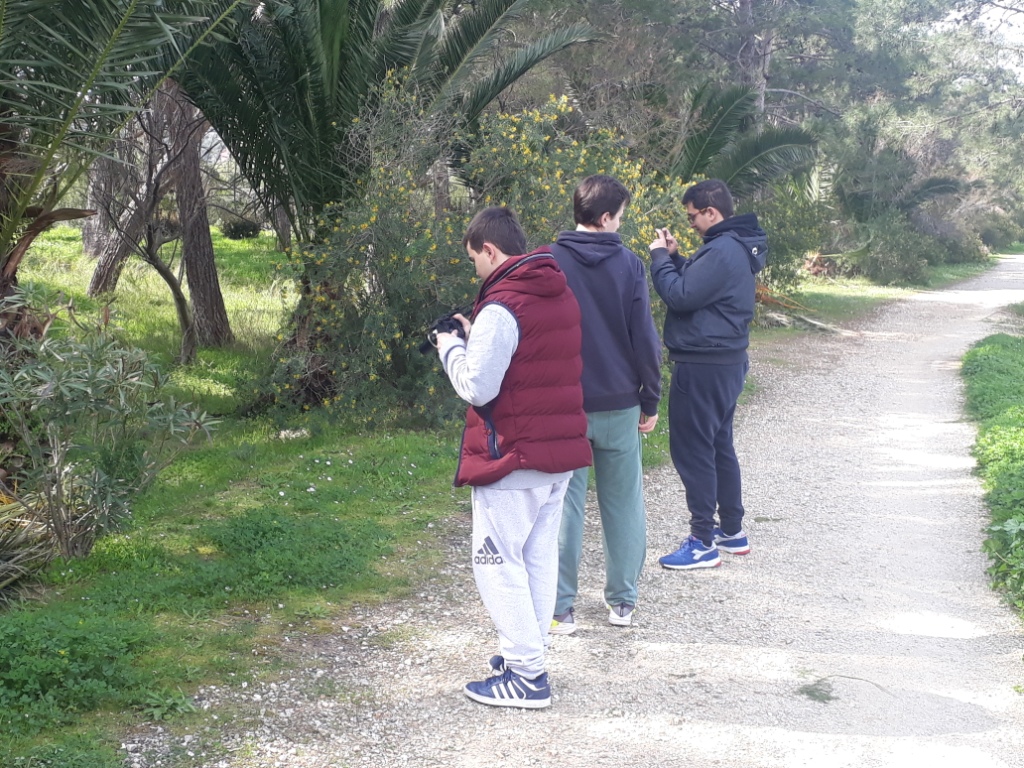
------------------------------------------------------------------
TURKISH ECOSYSTEM - LAKE MARMARA
FLORA_FAUNA_TURKEY.docx
-----------------------------------------------------------------
LATVIAN ECOSYSTEMS
Latvia. Ecosystems 1..pptx
Latvia. Ecosystems 2..pptx
Latvia. Ecosystems 3..pptx
Latvia. Abiotic parameters of water 1.pptx
Latvia. Abiotic parameters of water 2.pptx
Latvia. Abiotic parameters of water 3..pptx
Latvia. Flora. Material for e-book..doc
Latvia. Fauna. Material for e-book. Swamps Fauna.doc
-----------------------------------------------------------------------
PORTUGUESE ECOSYSTEM
COURA RIVER fauna and flora.docx
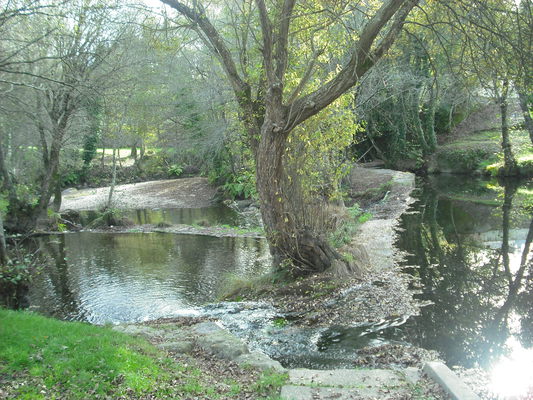
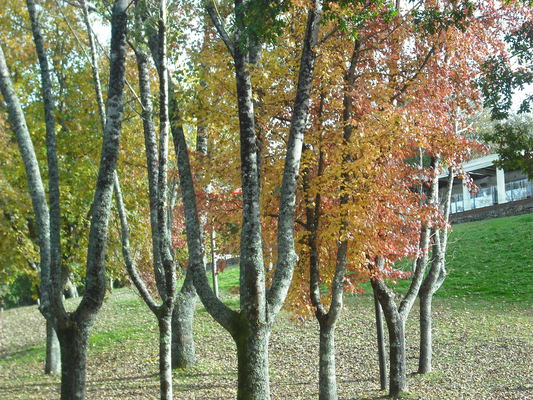
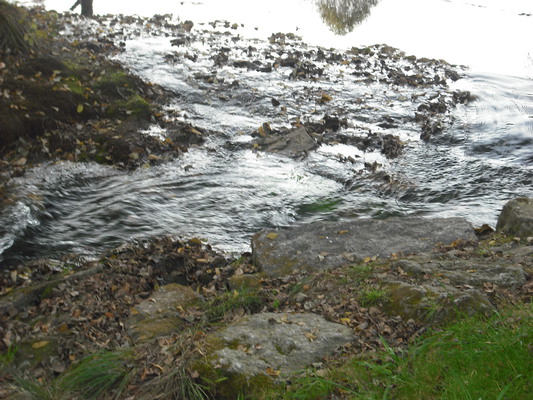
------------------------------------------------------------------------
CROATIAN ECOSYSTEM - NERETVA RIVER
Croatia aquatic ecosystem- NOVO.ppt
Croatia - water analysis.pptx
Croatia- Flora and fauna.pptx